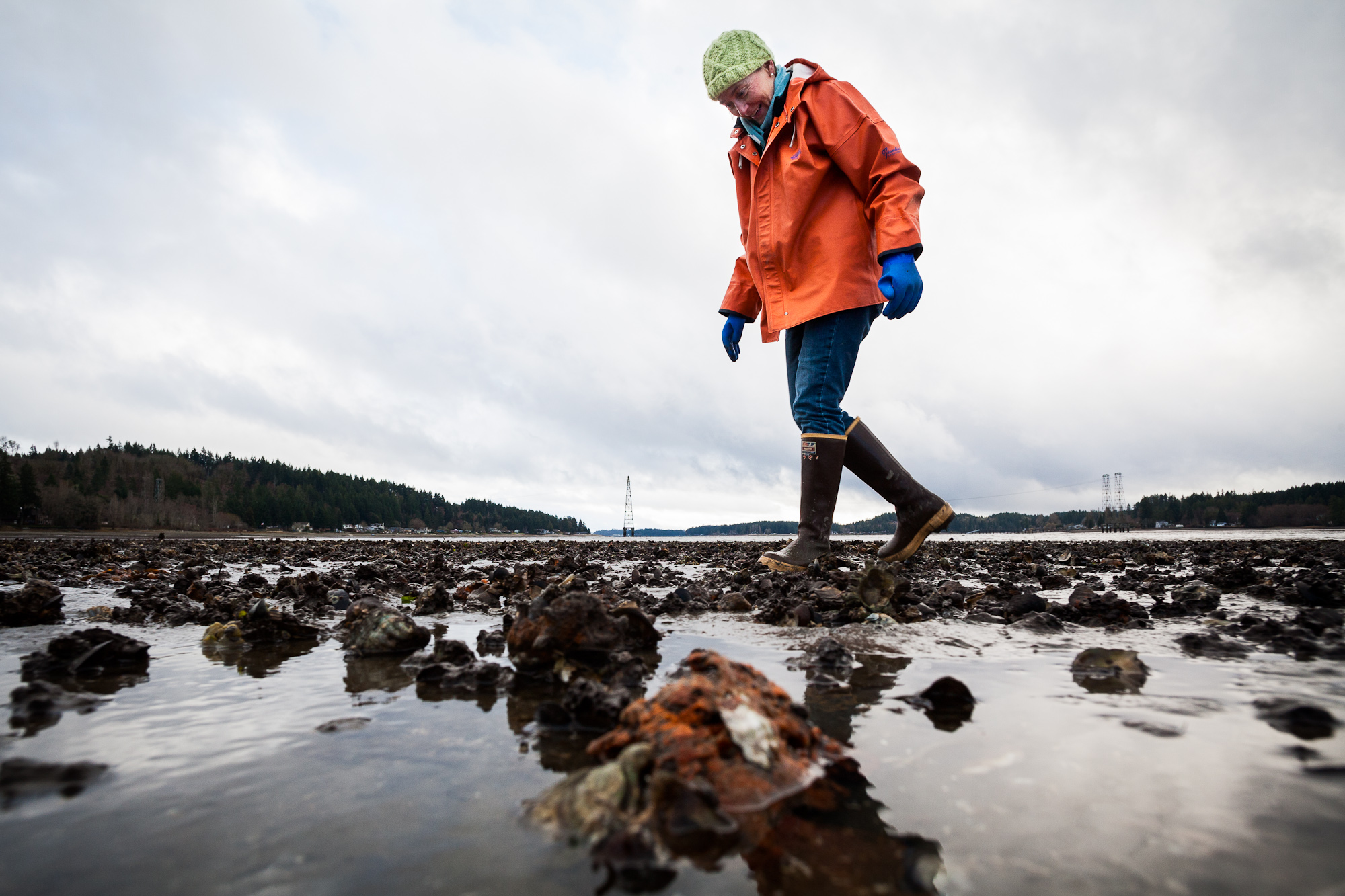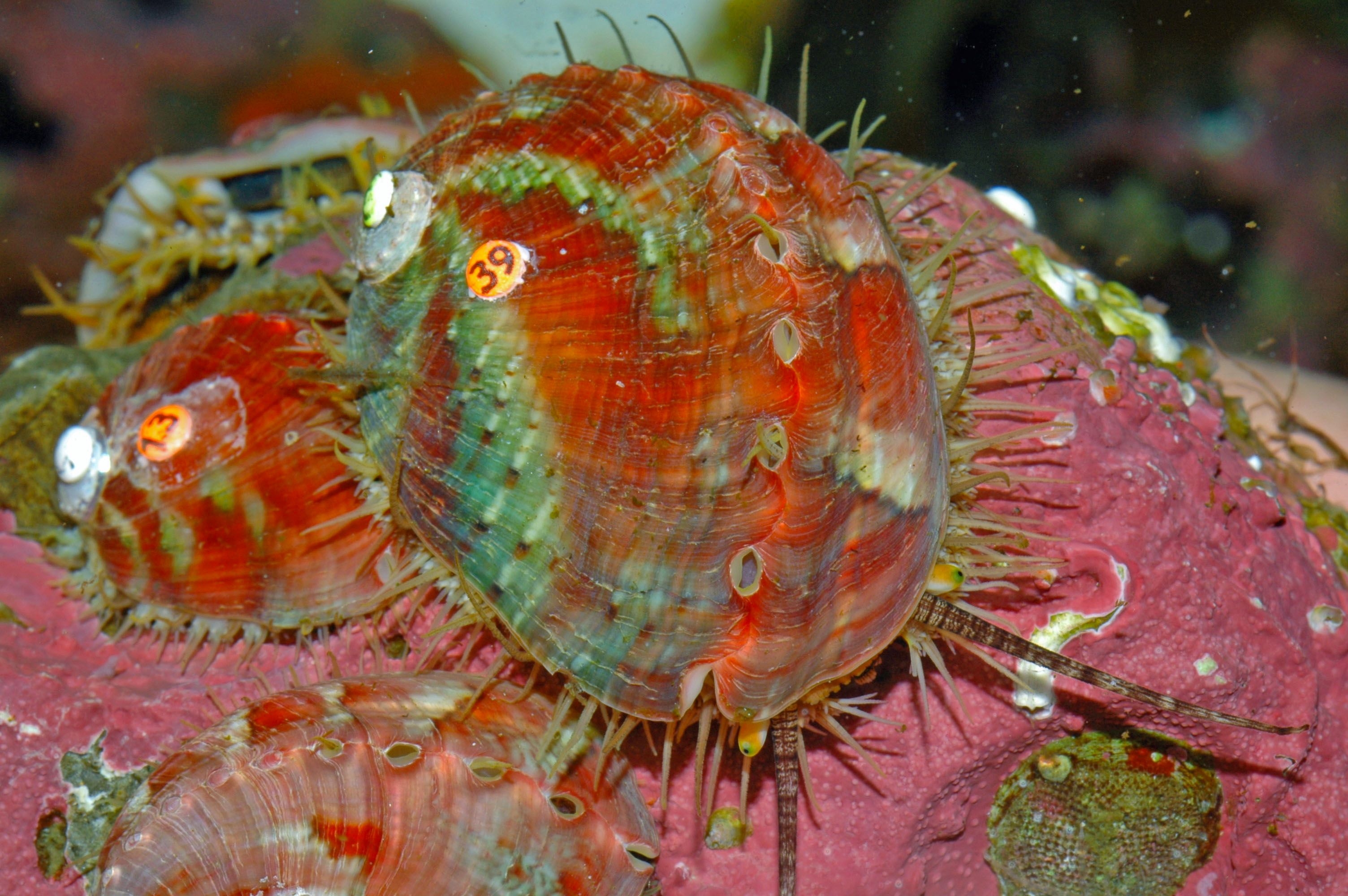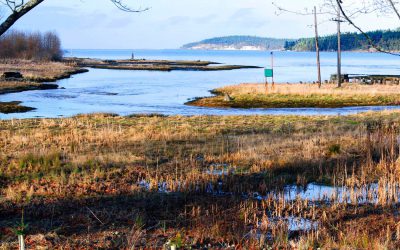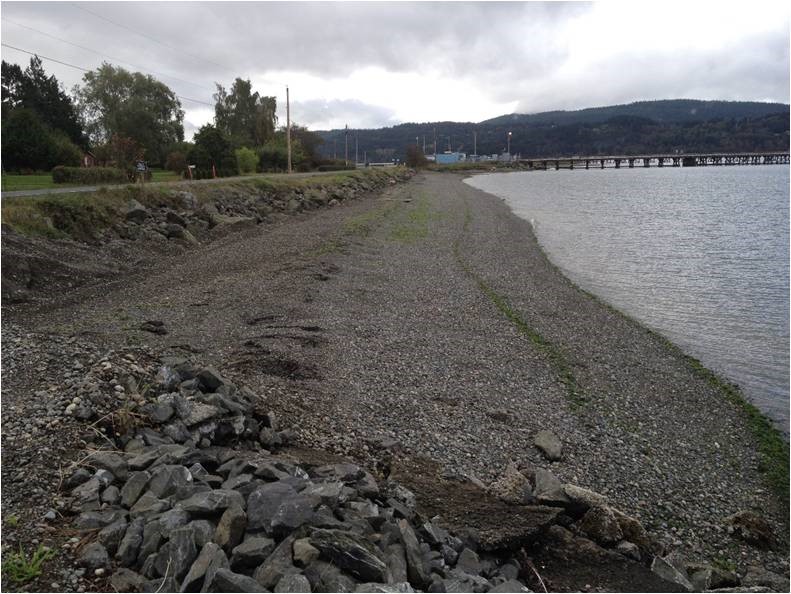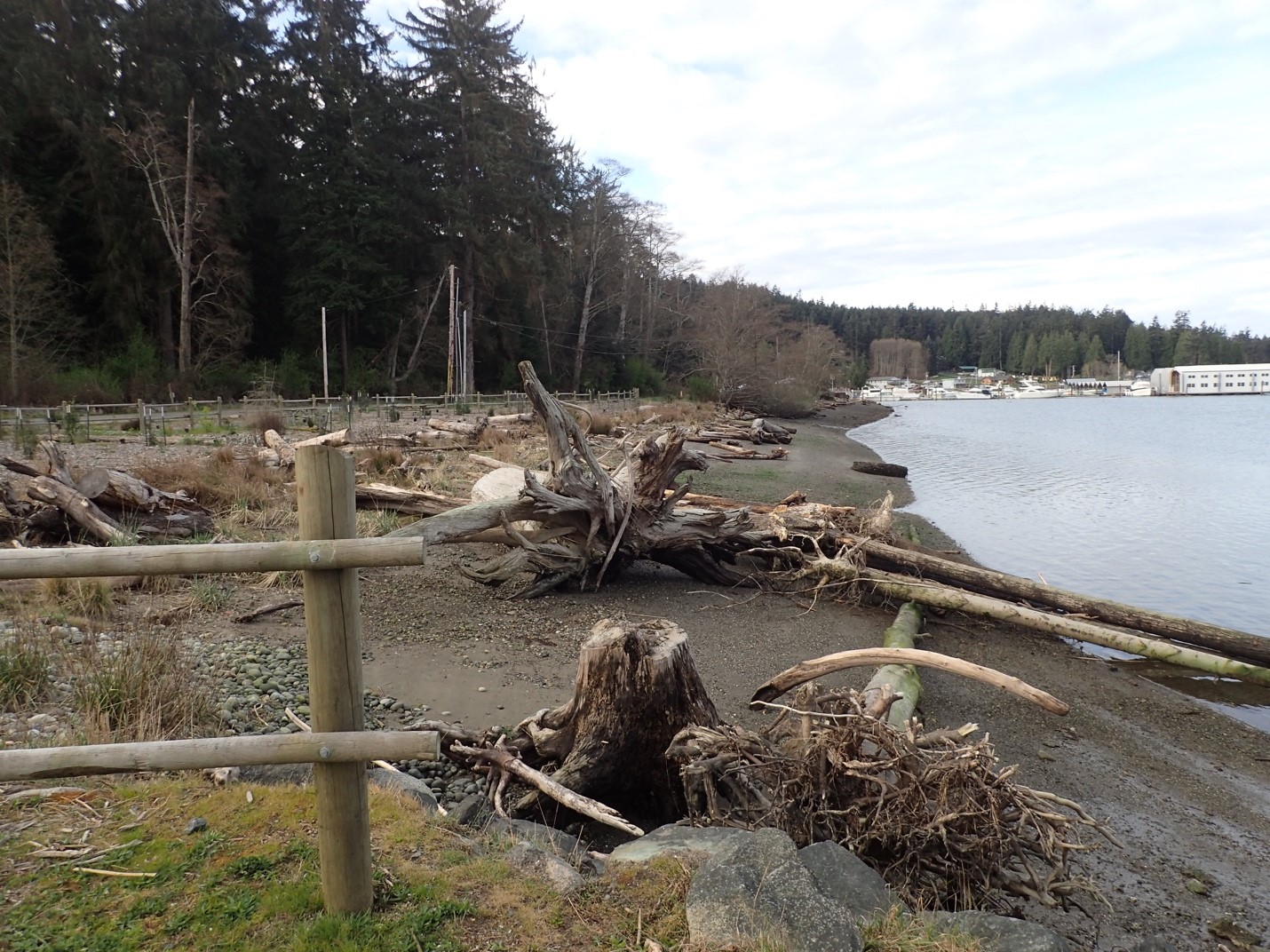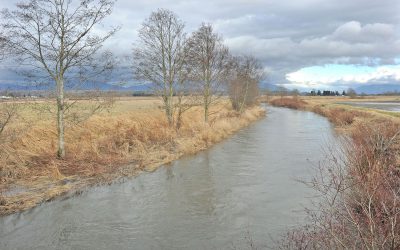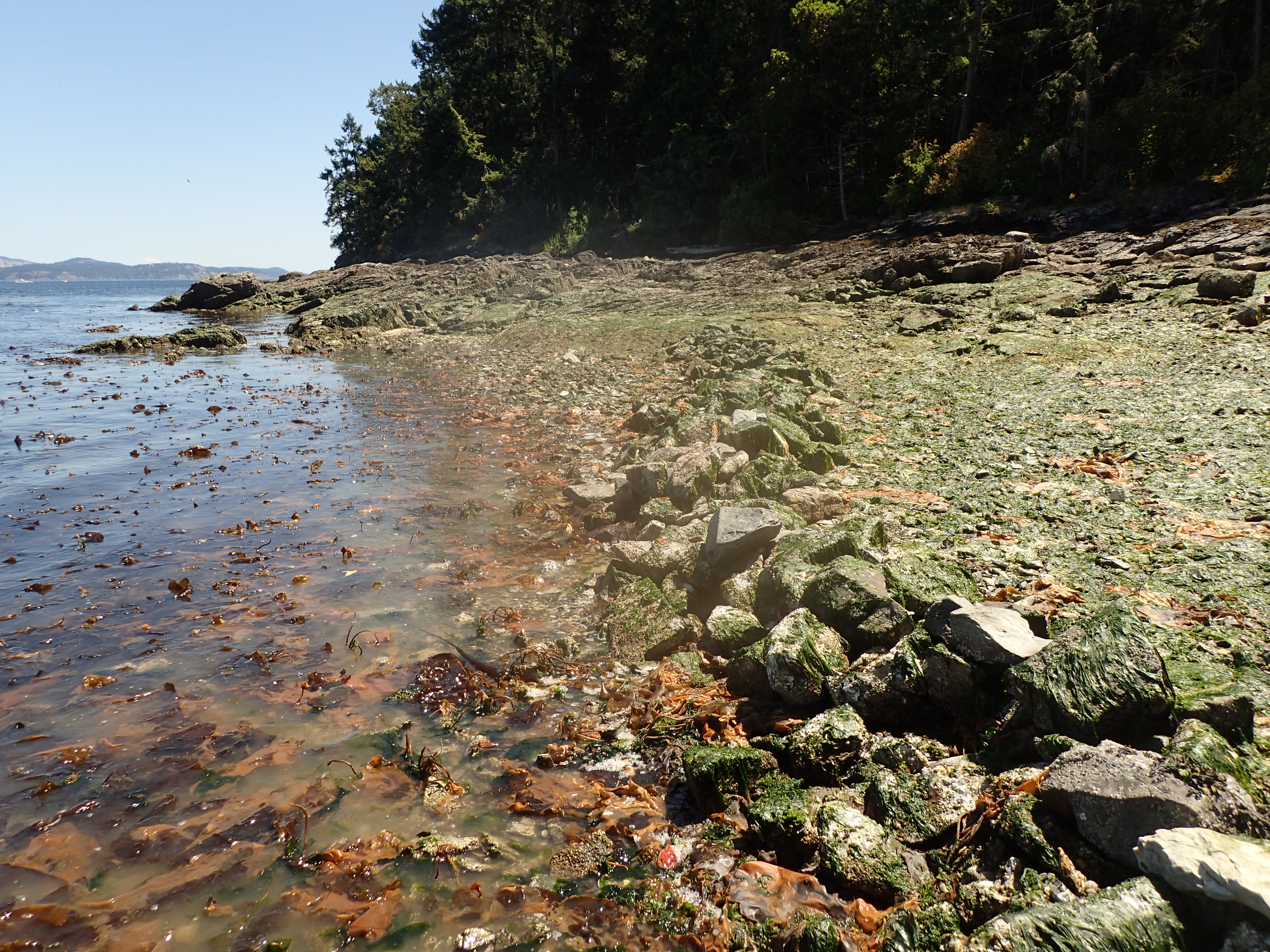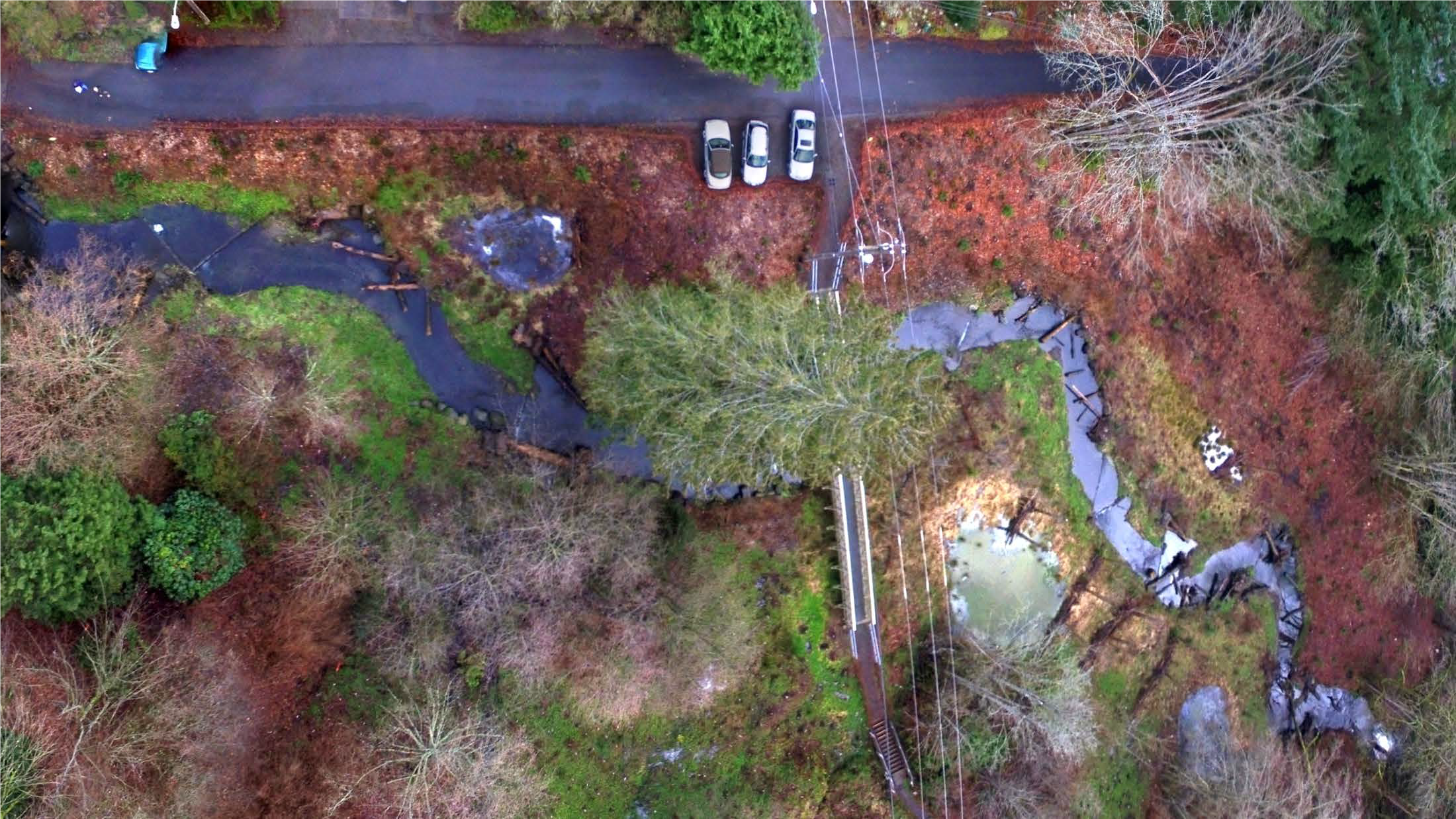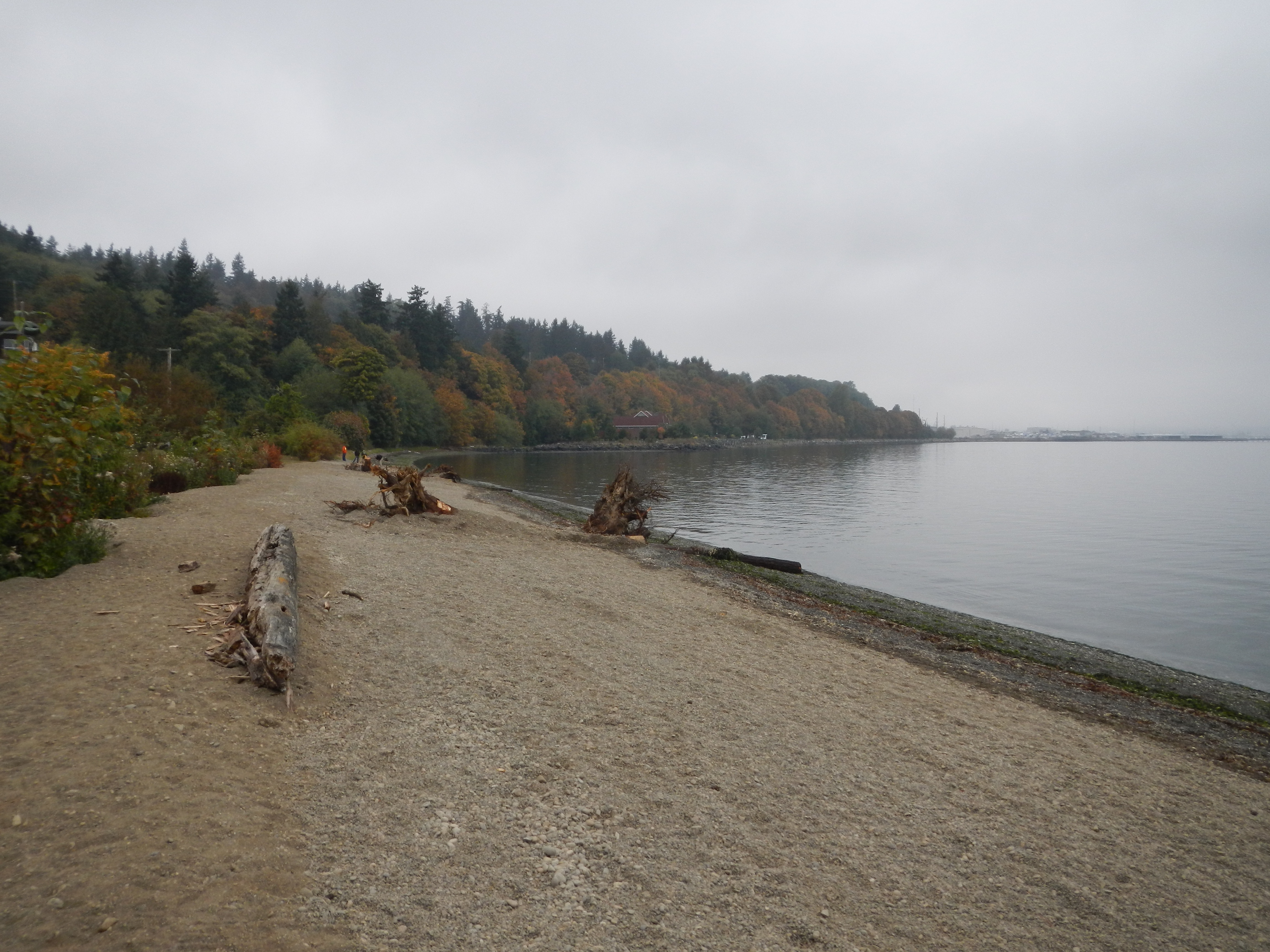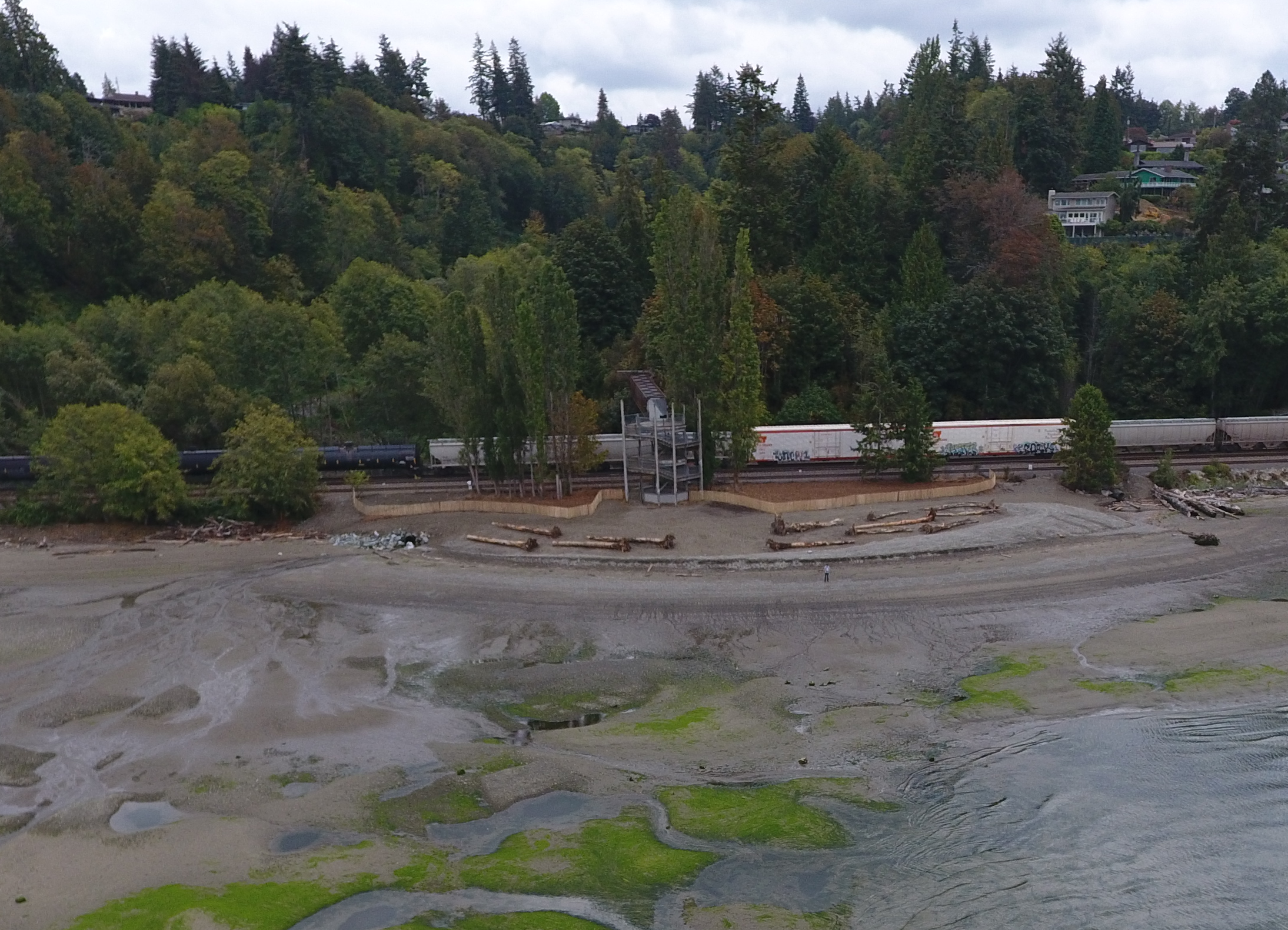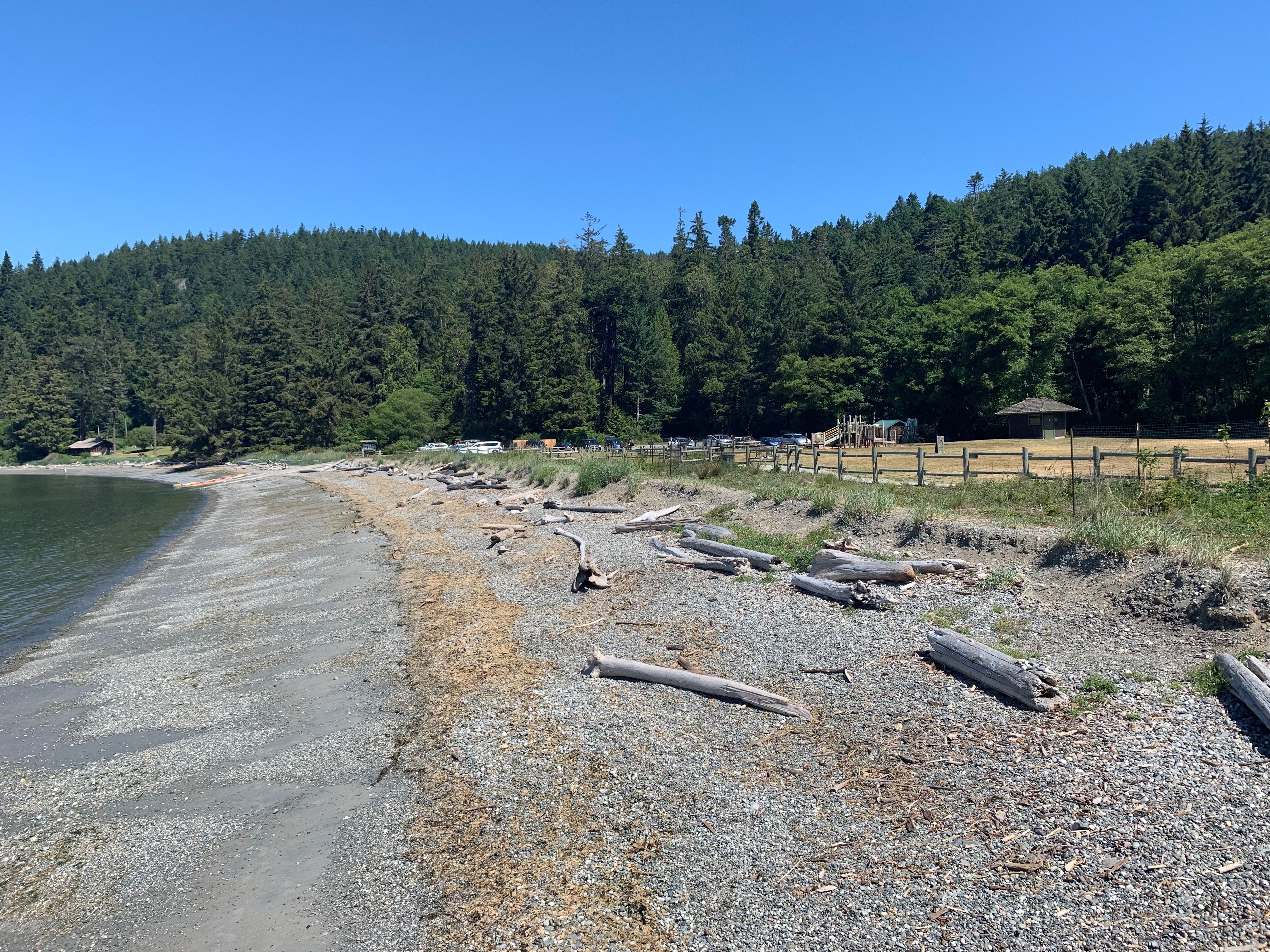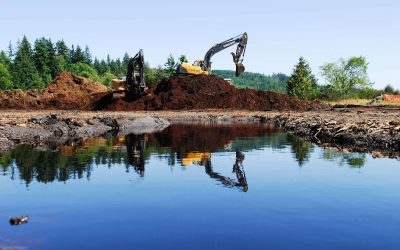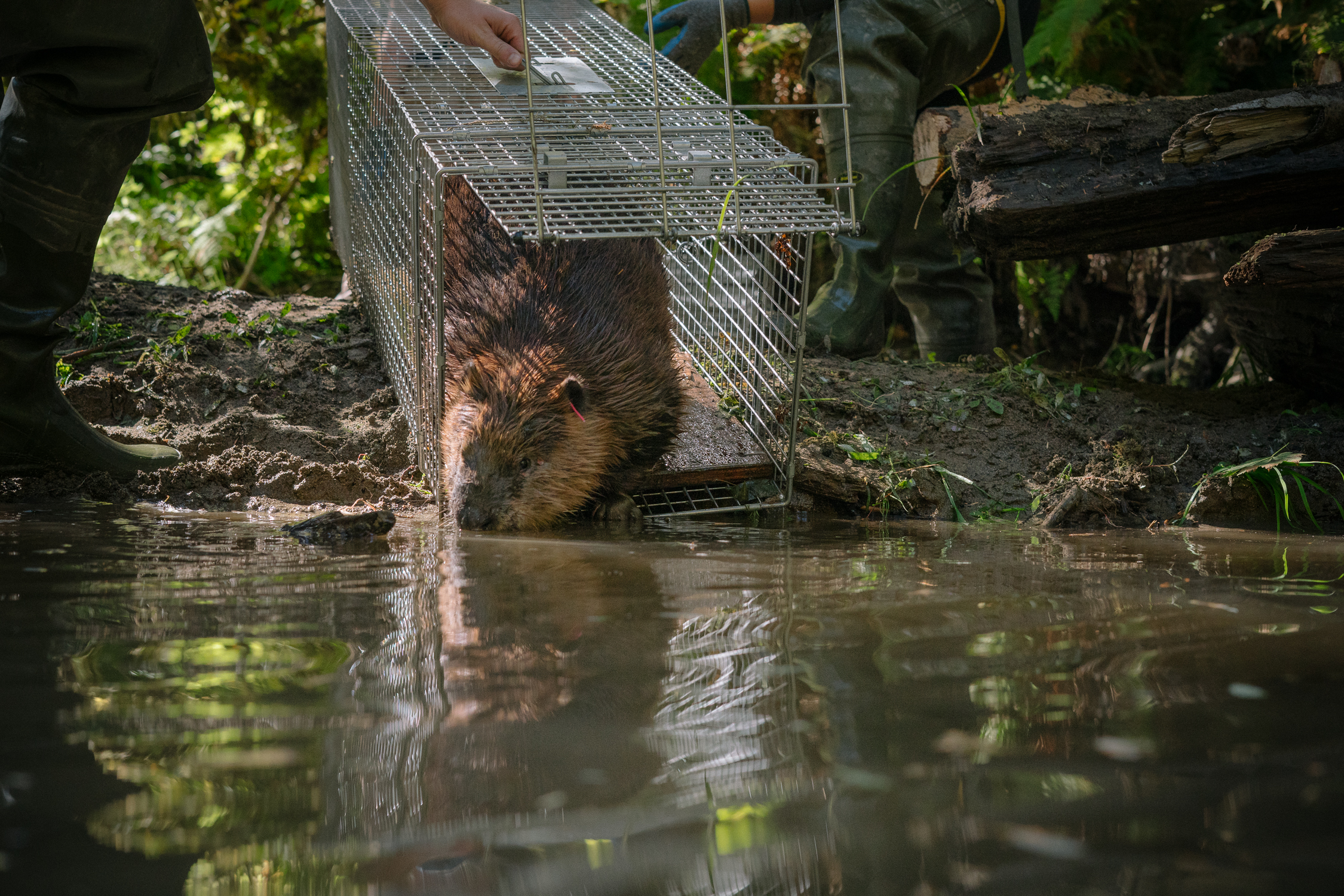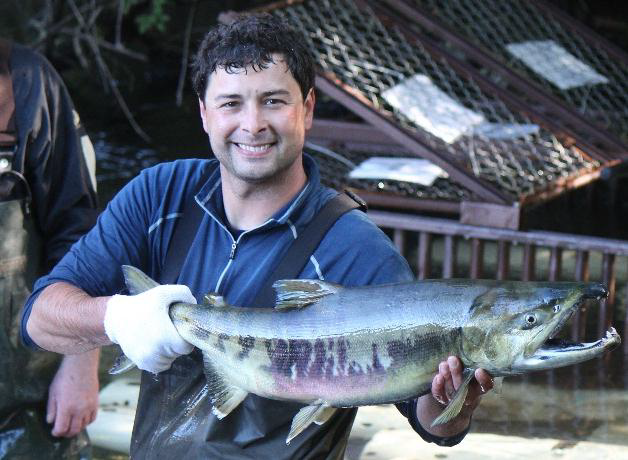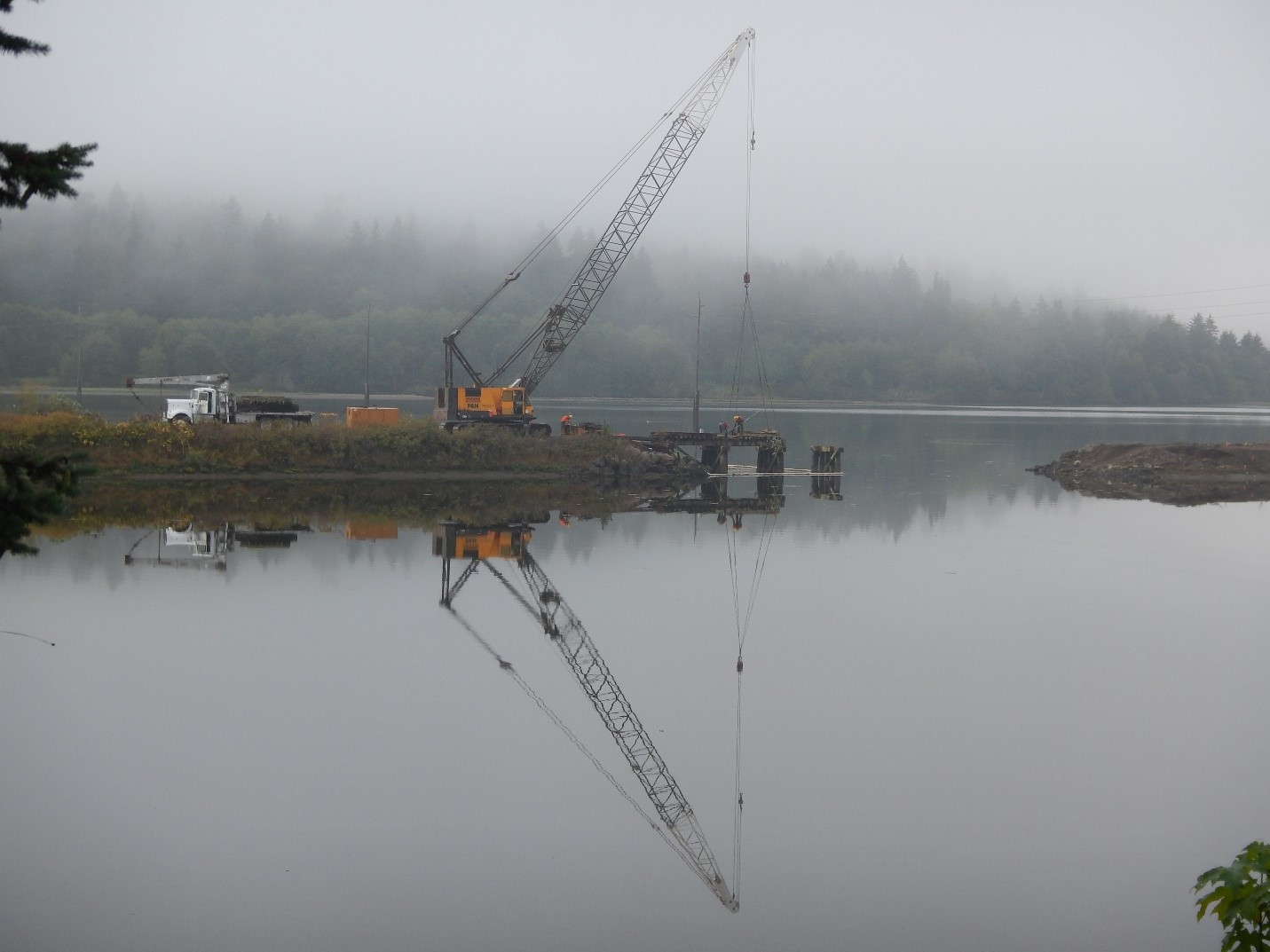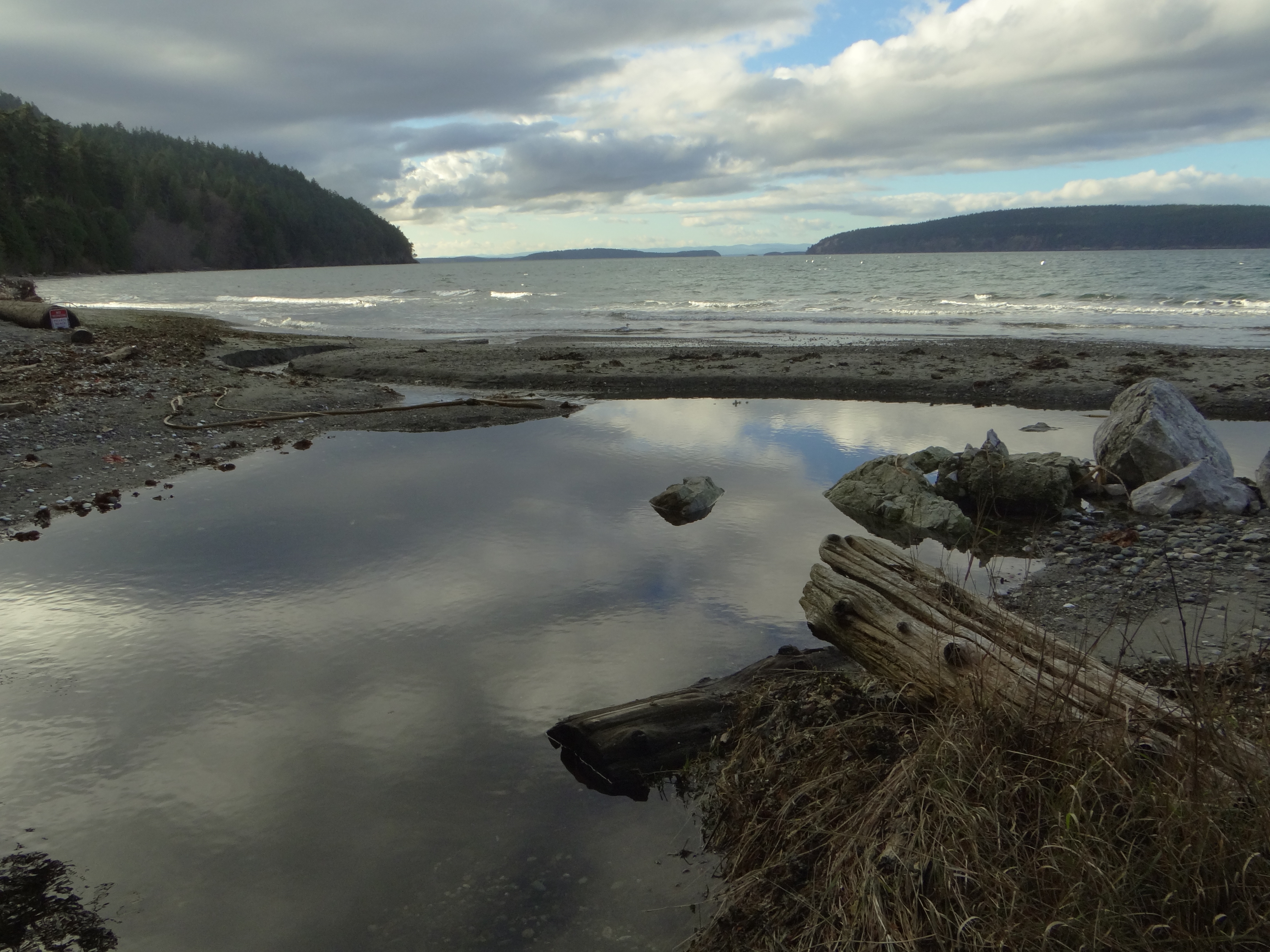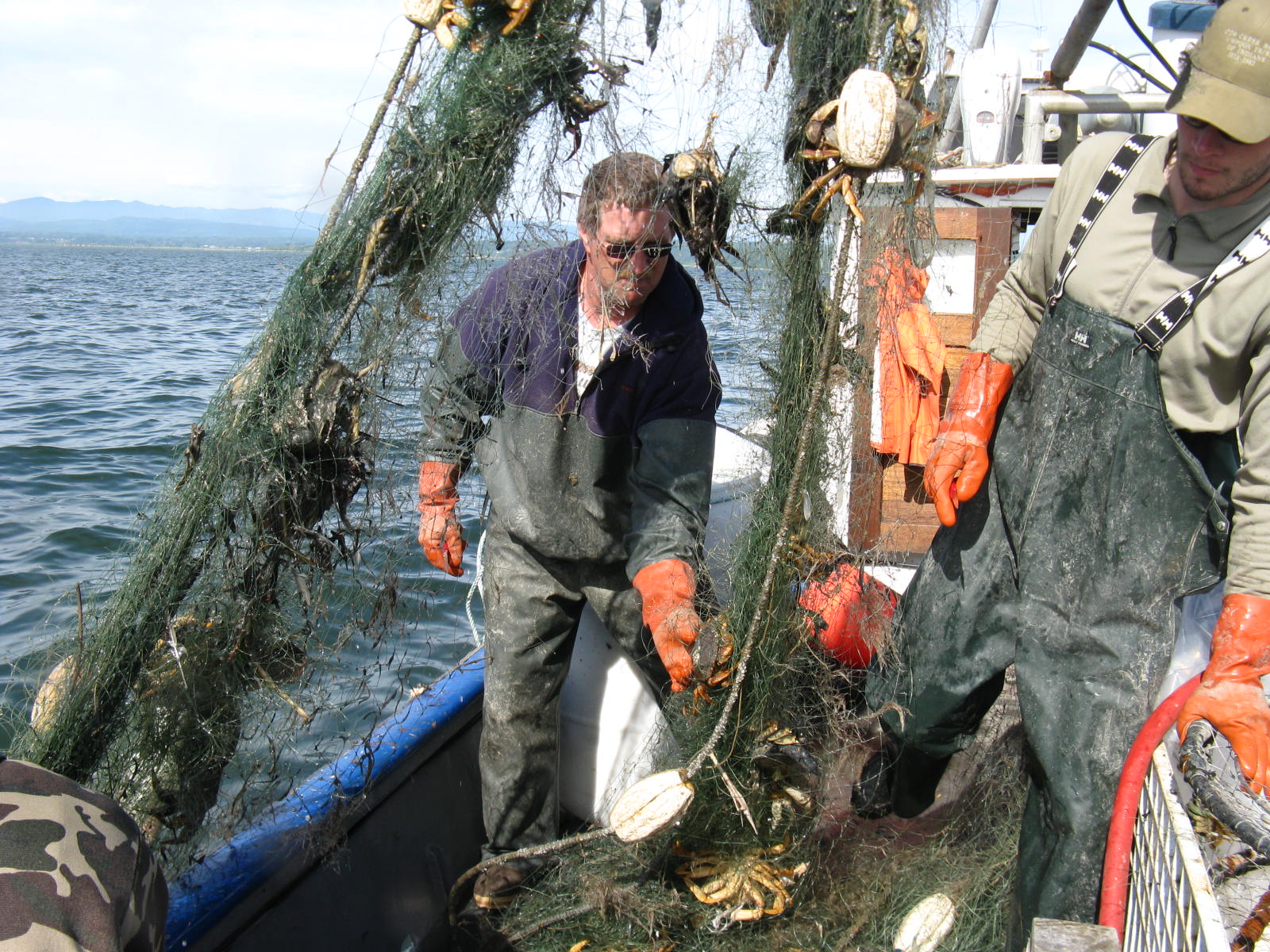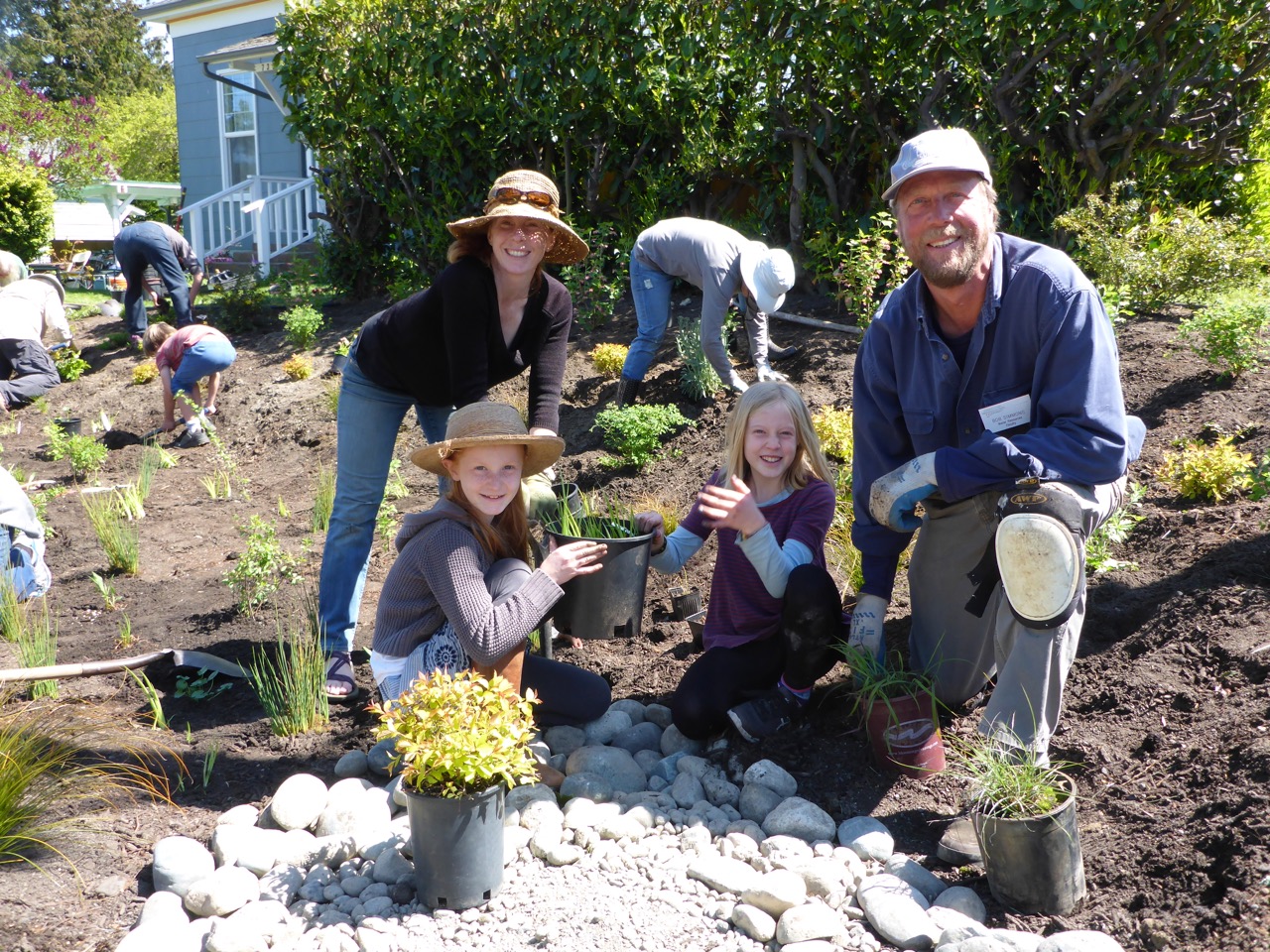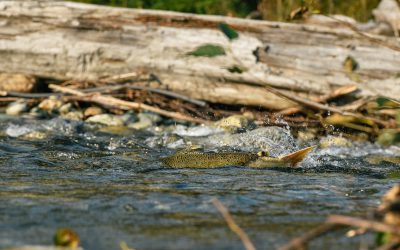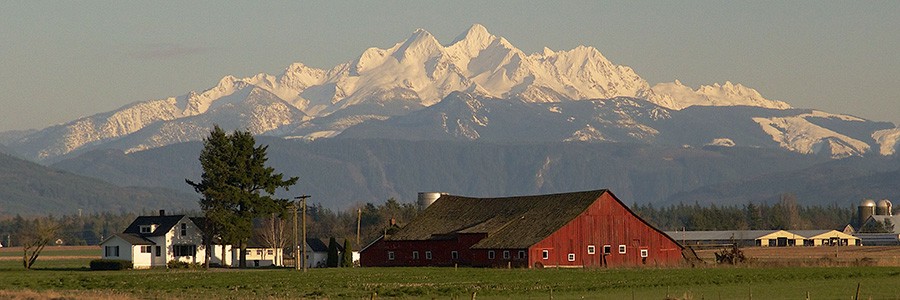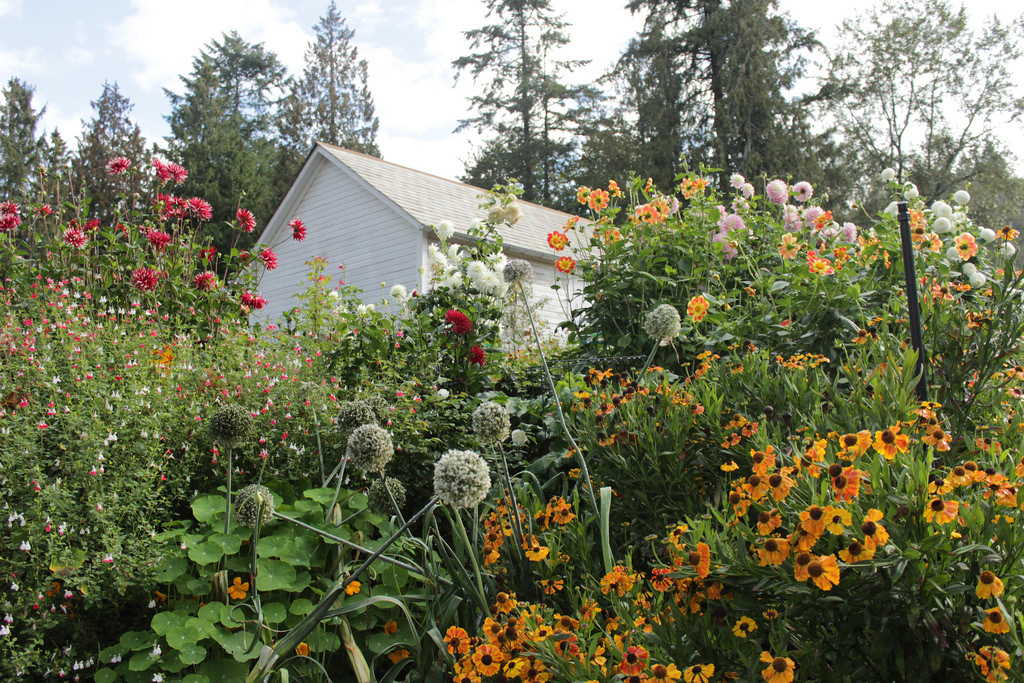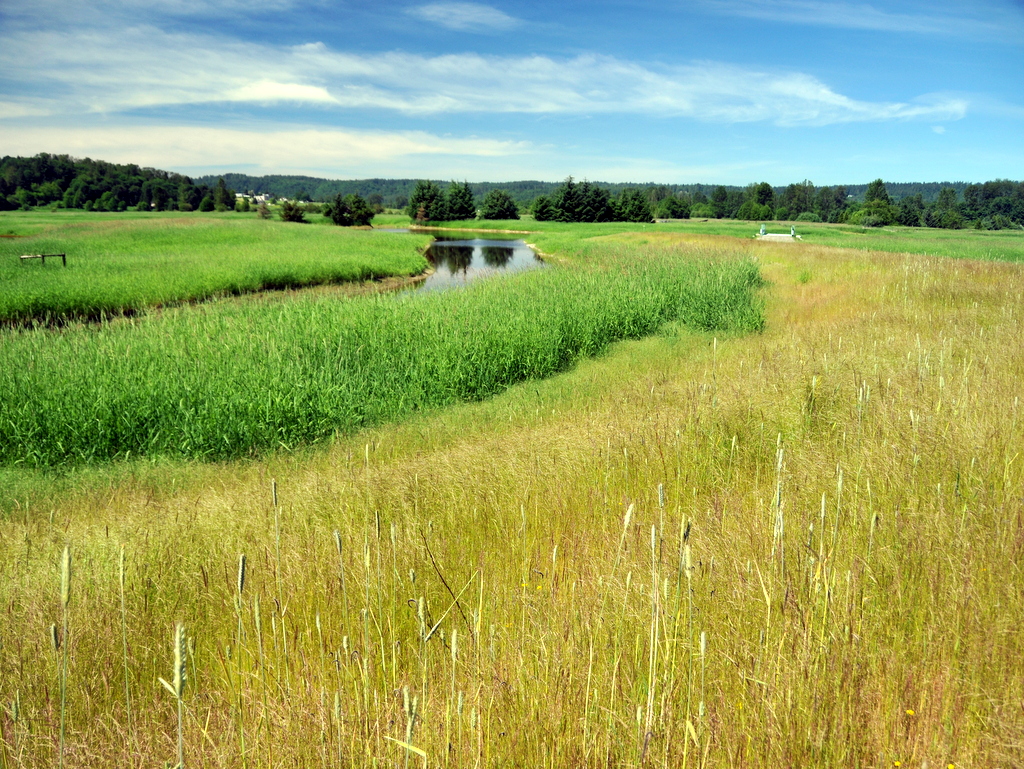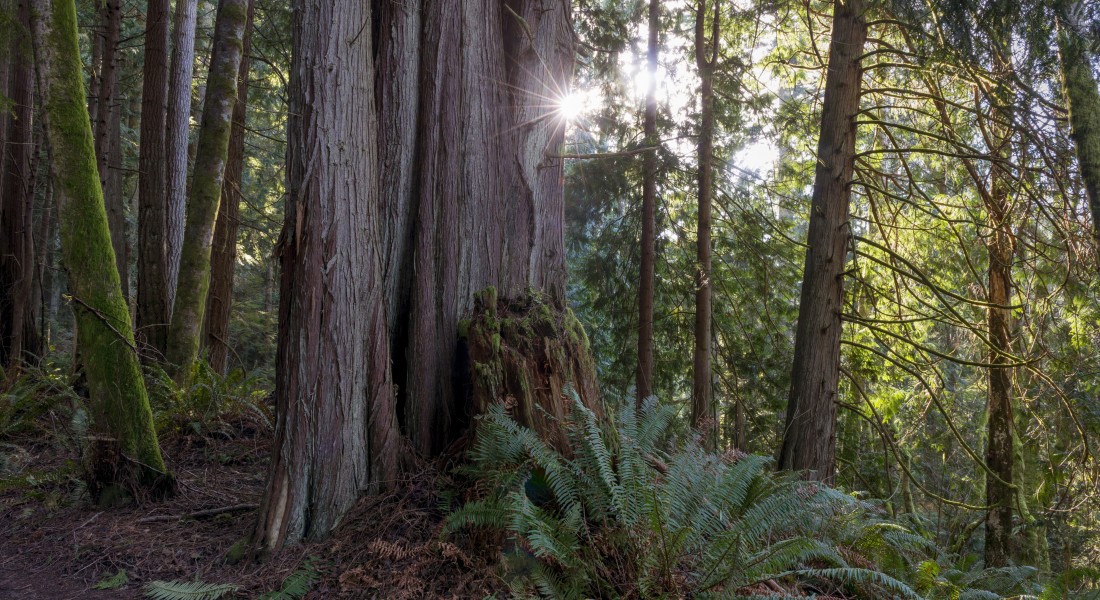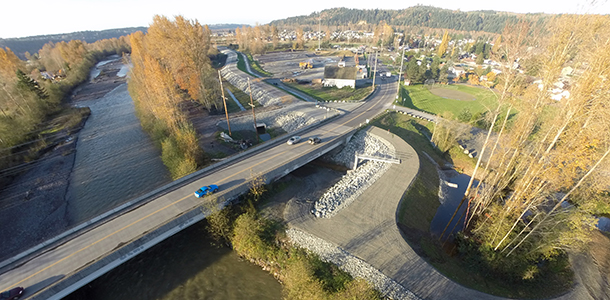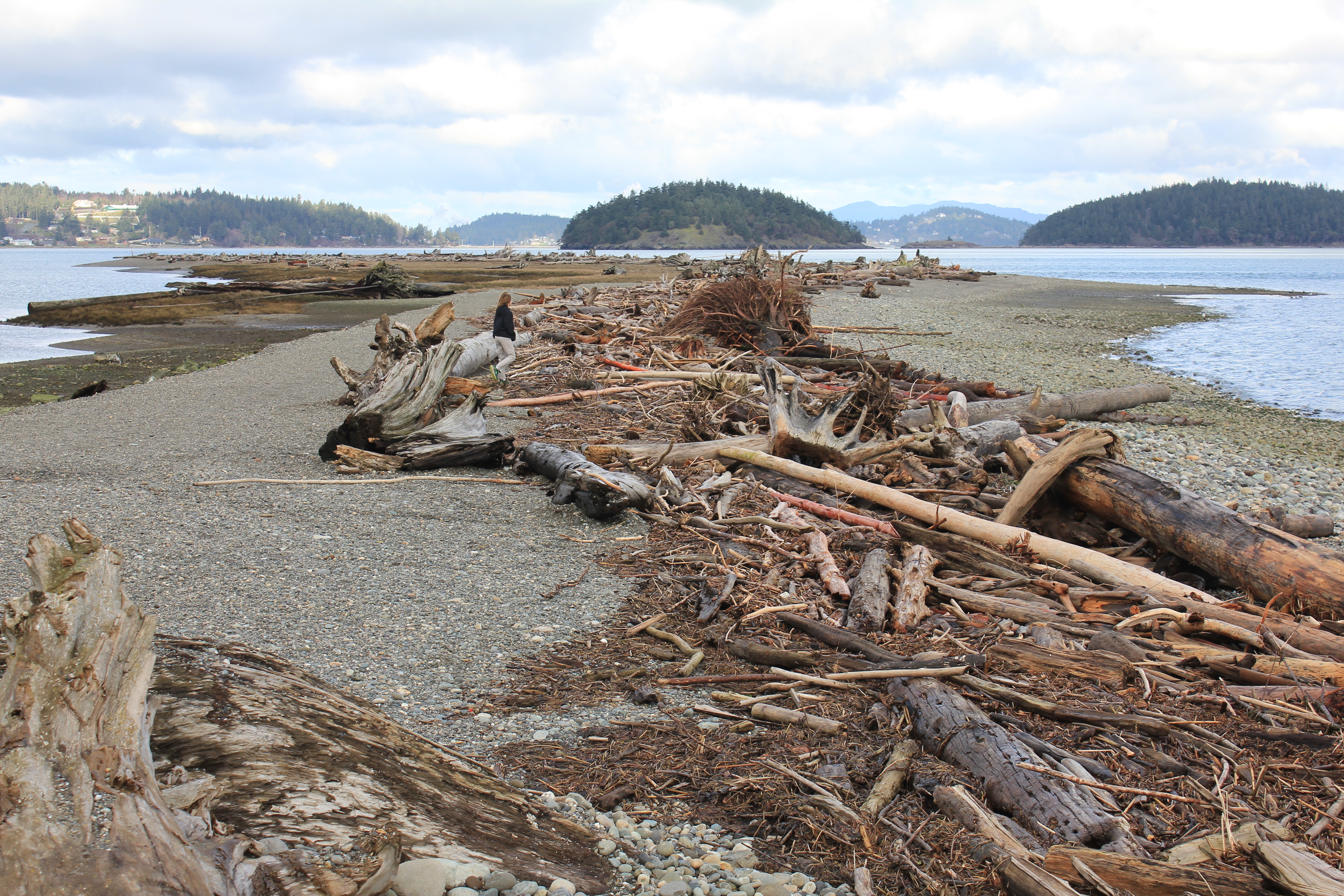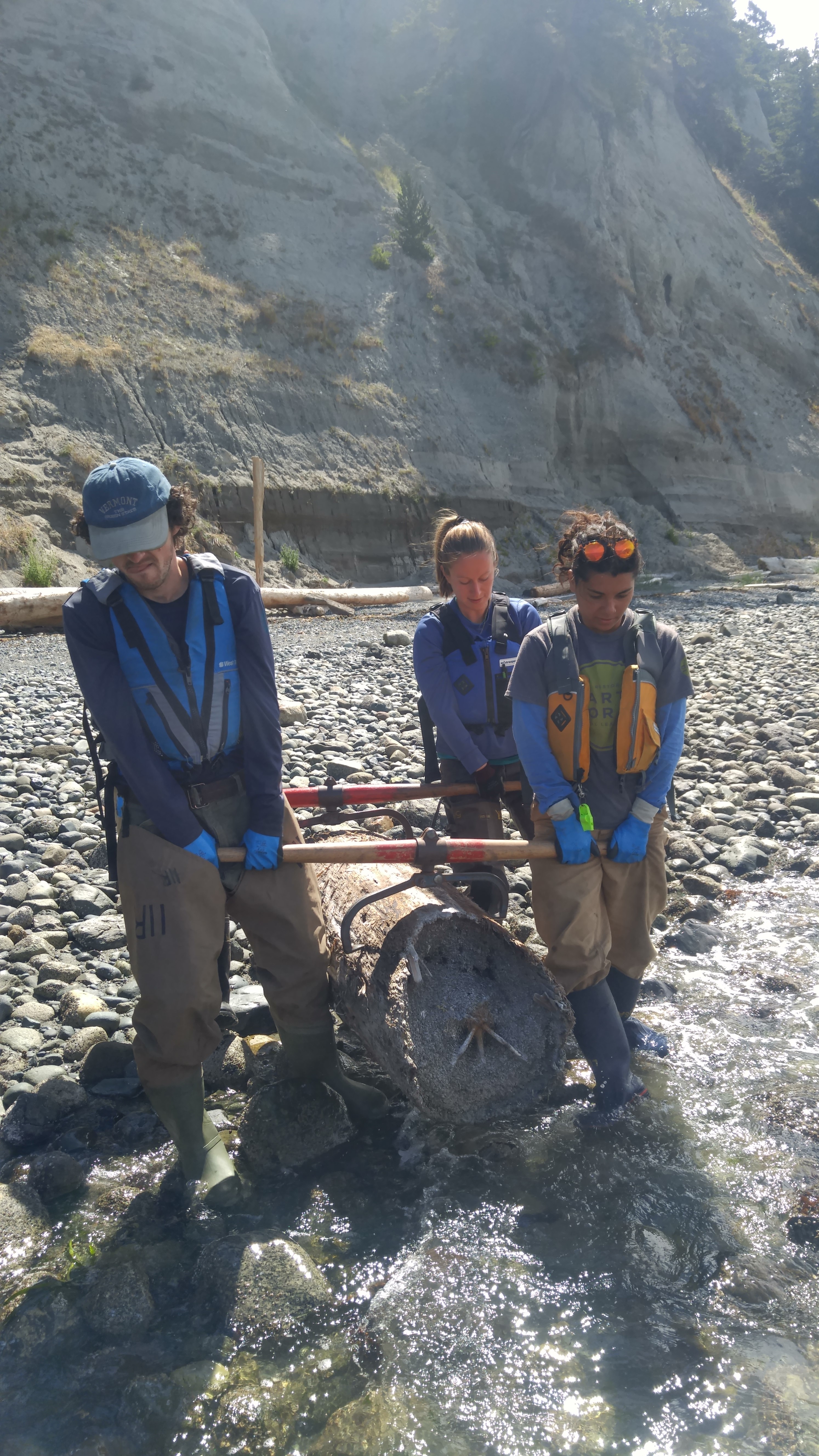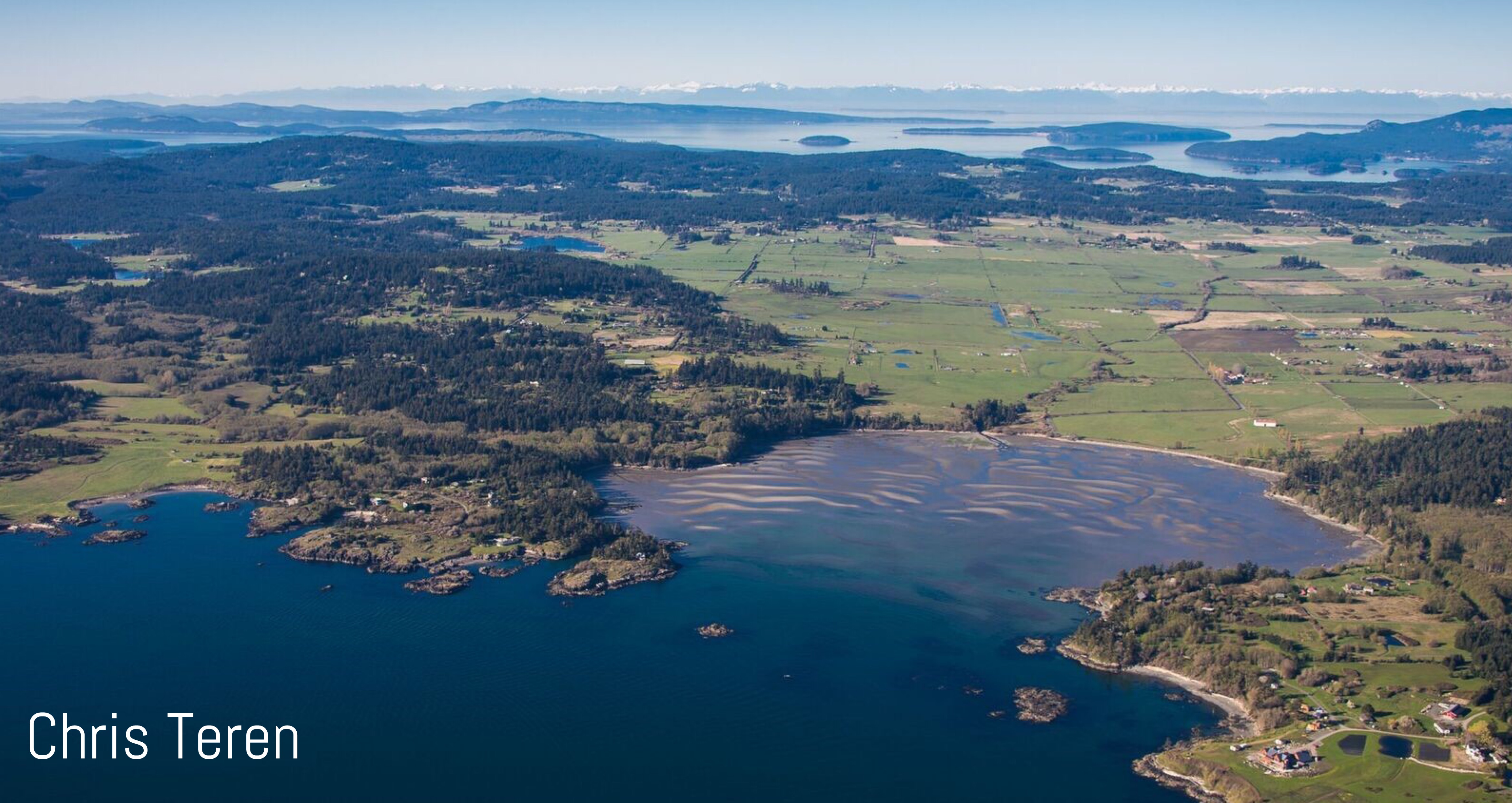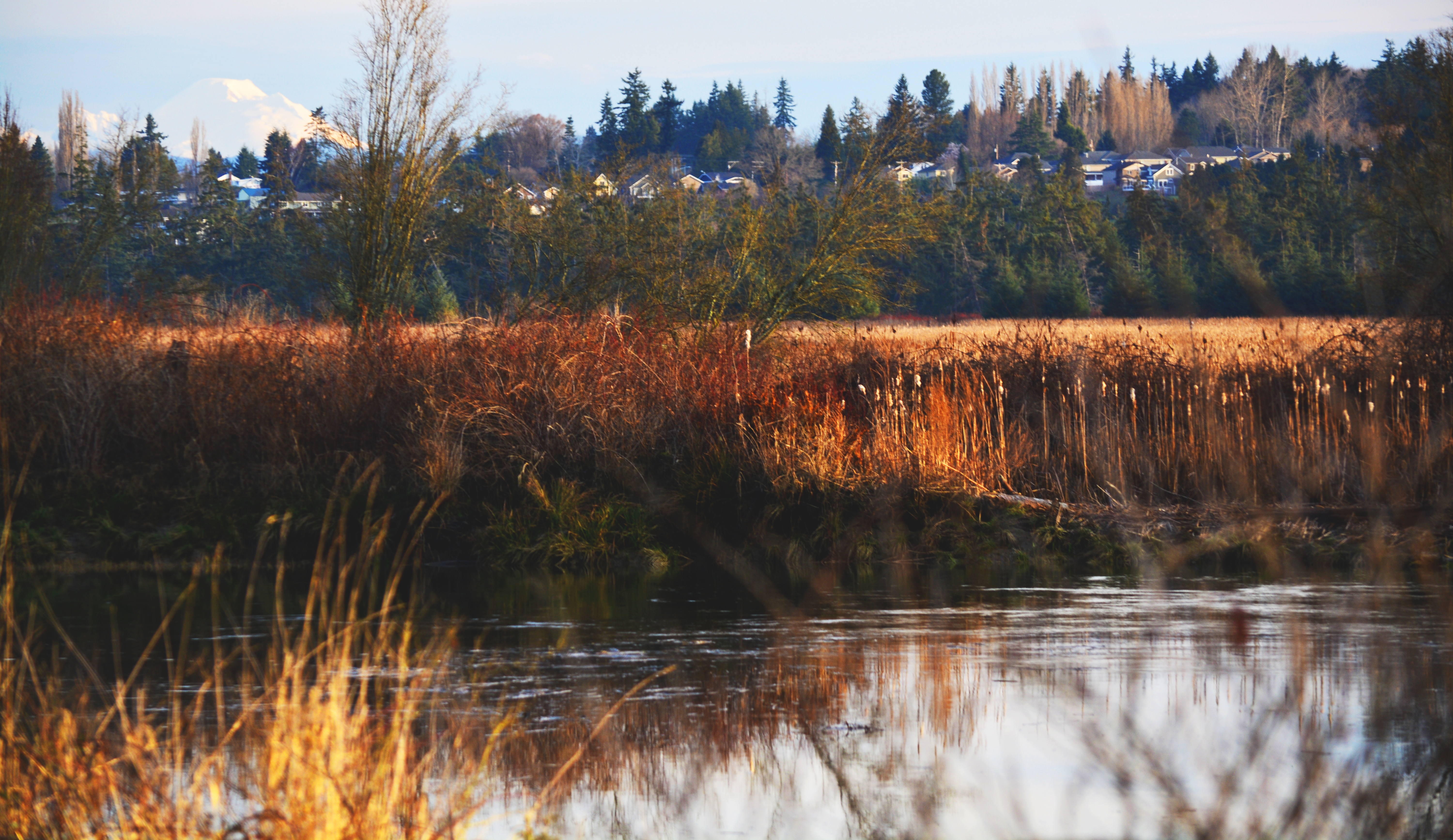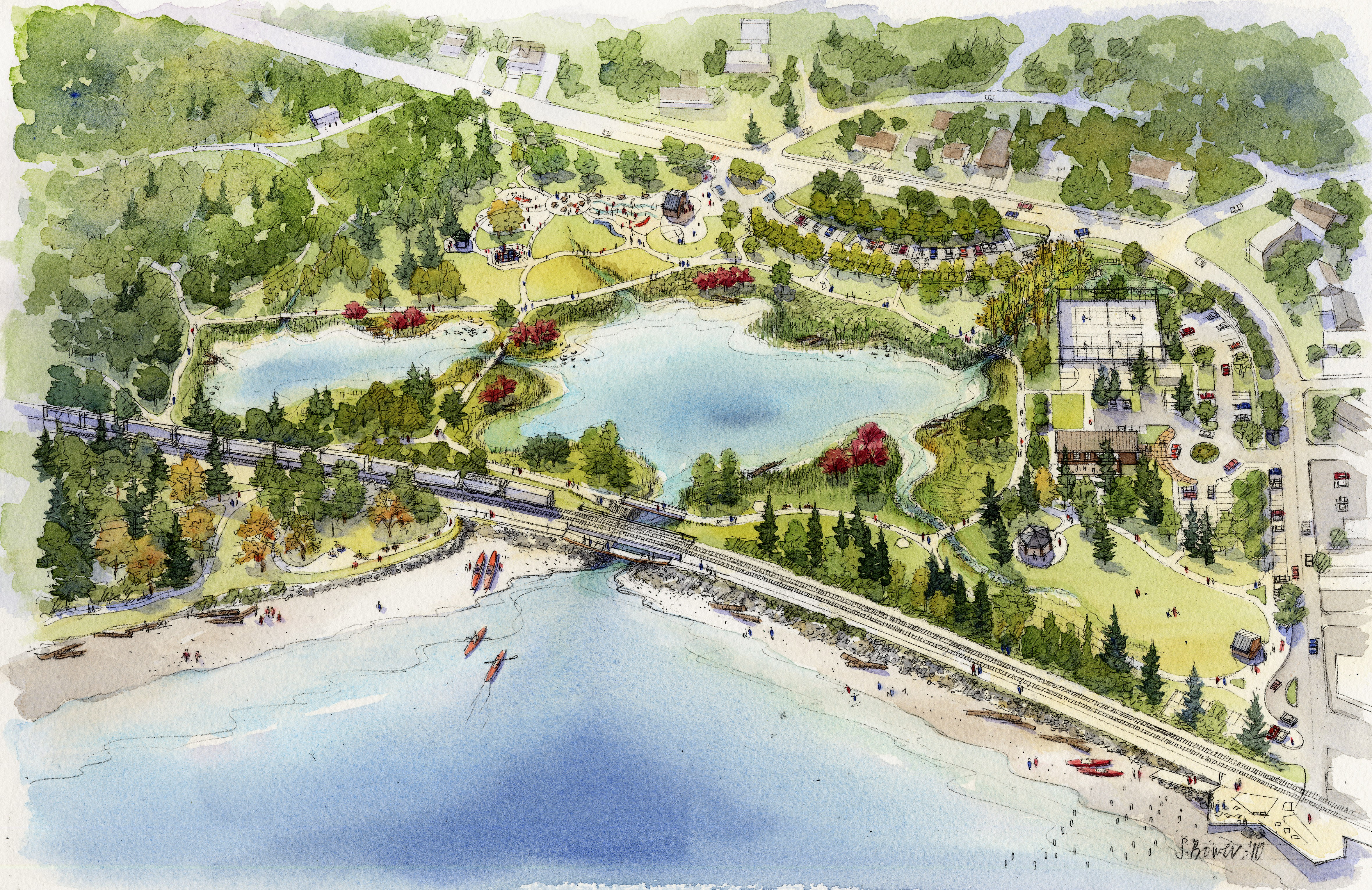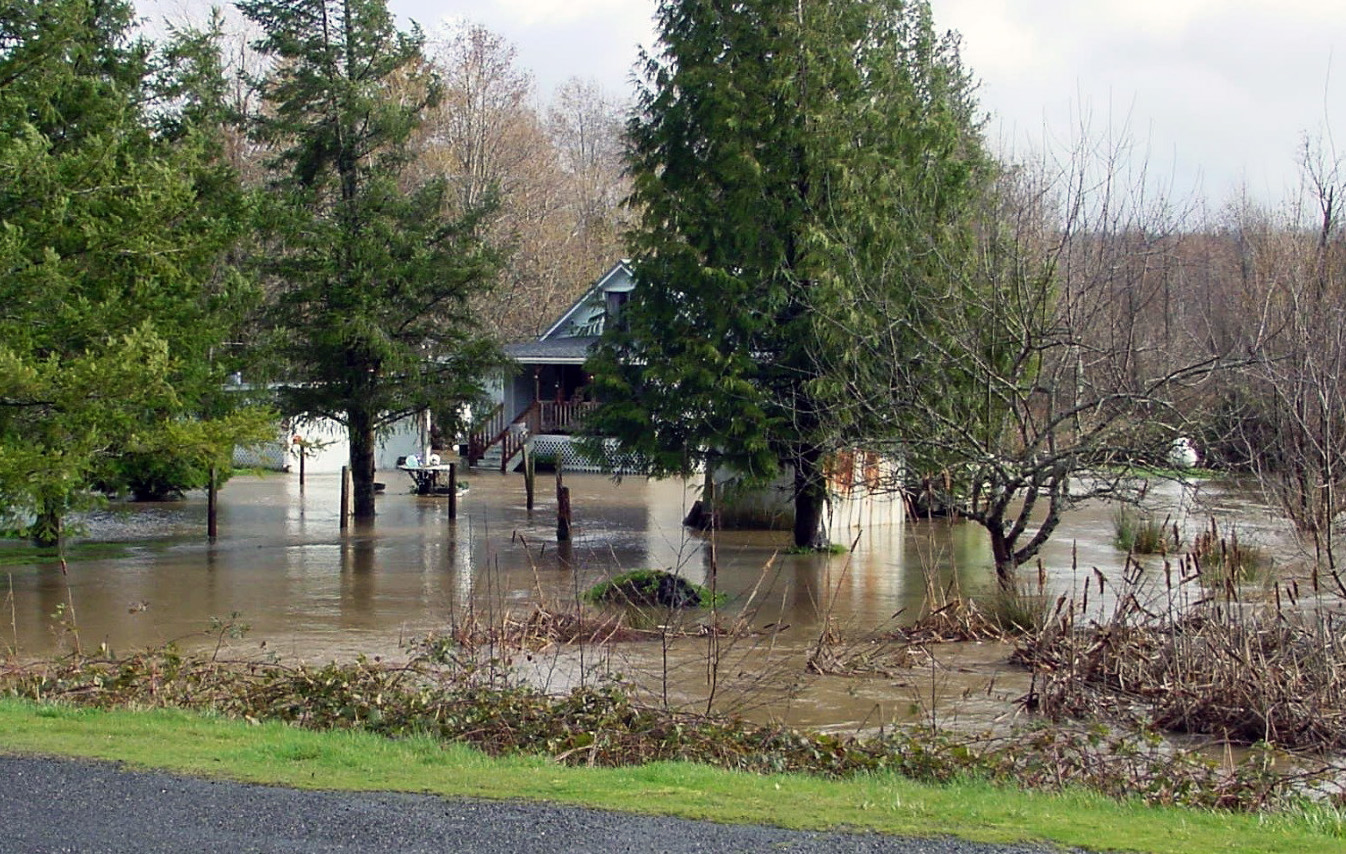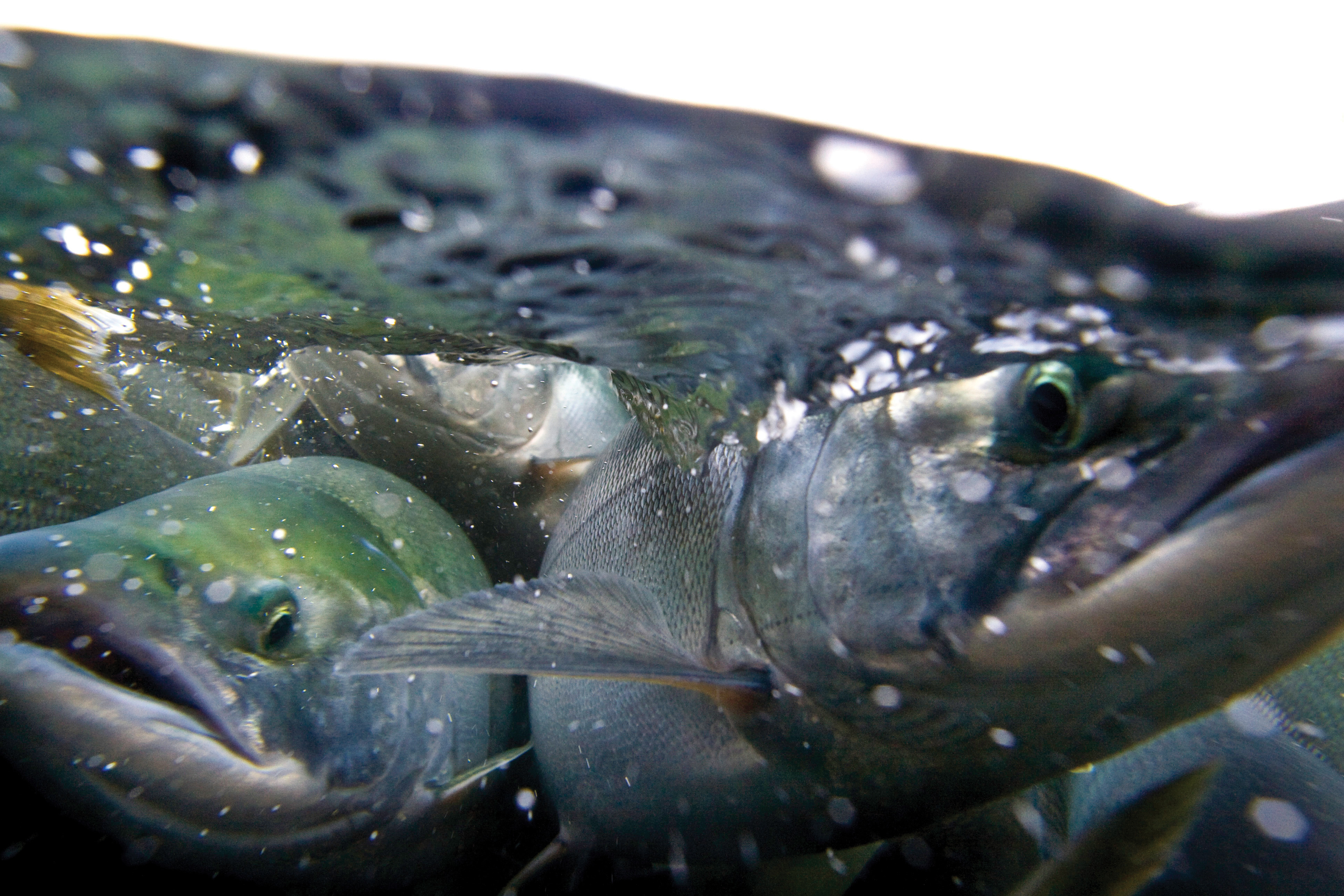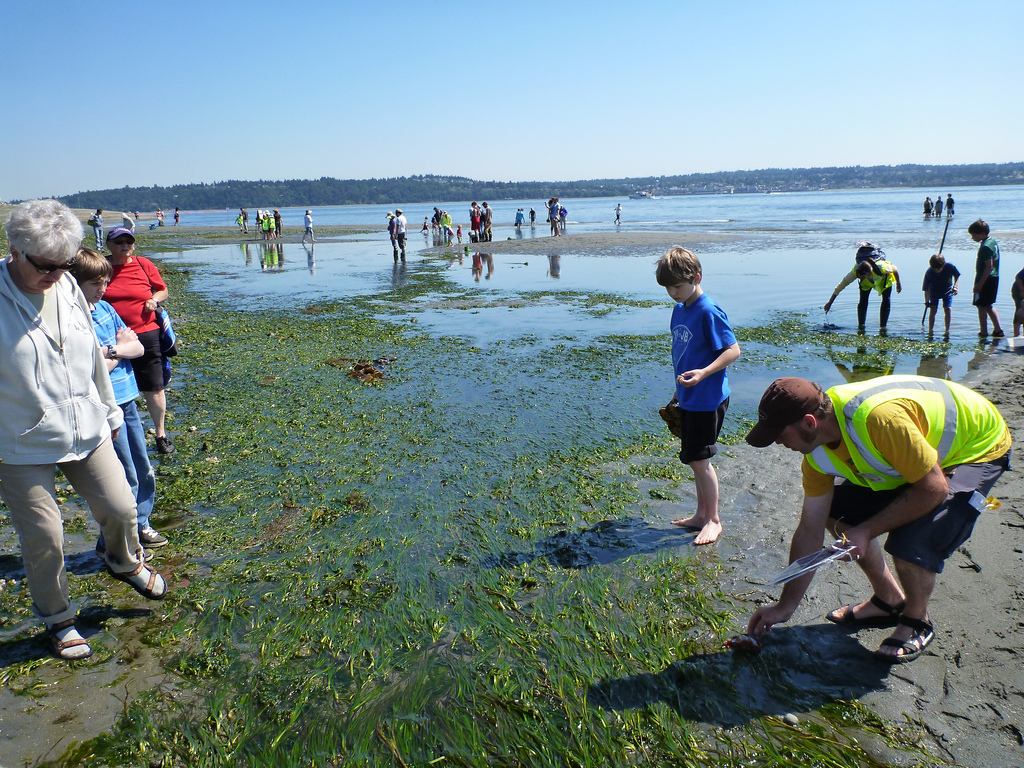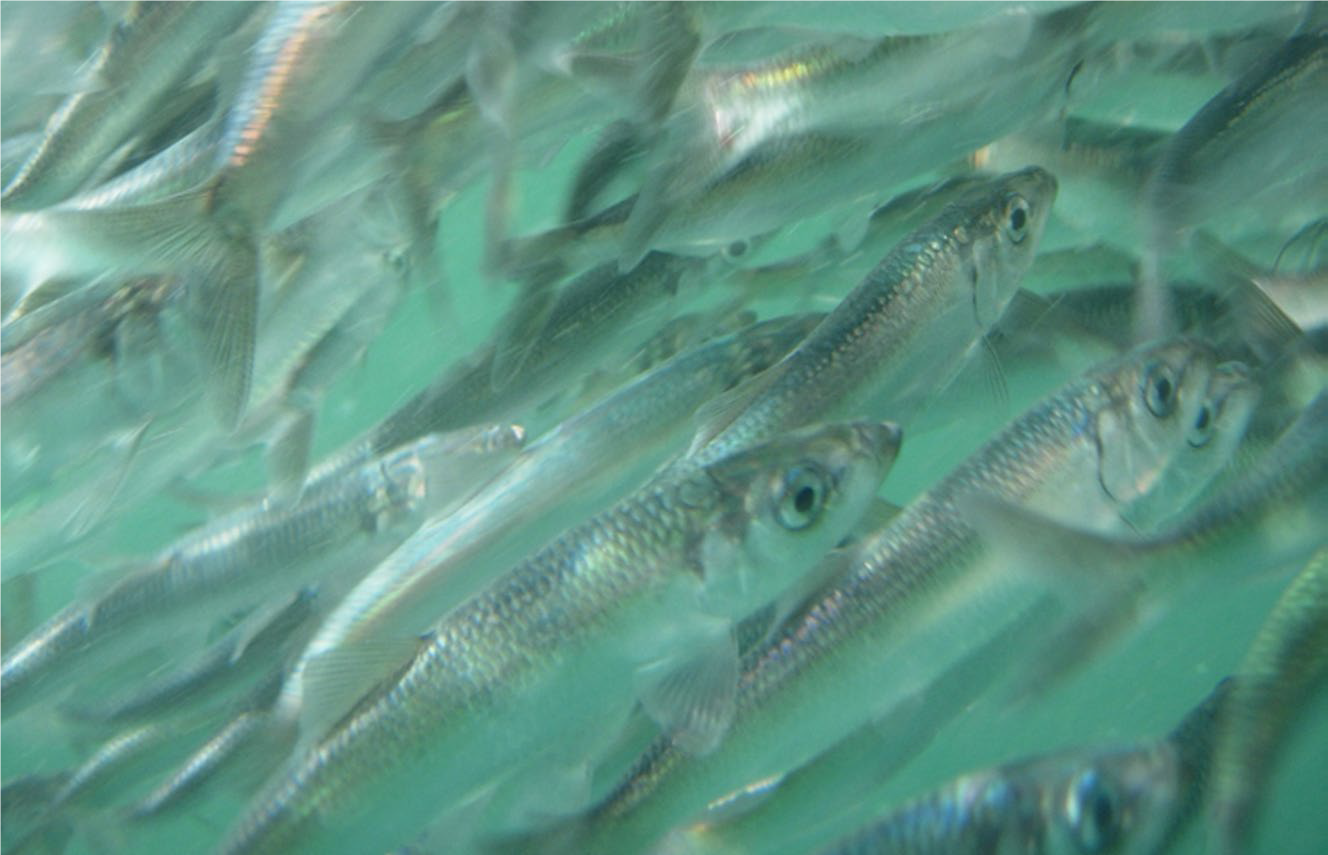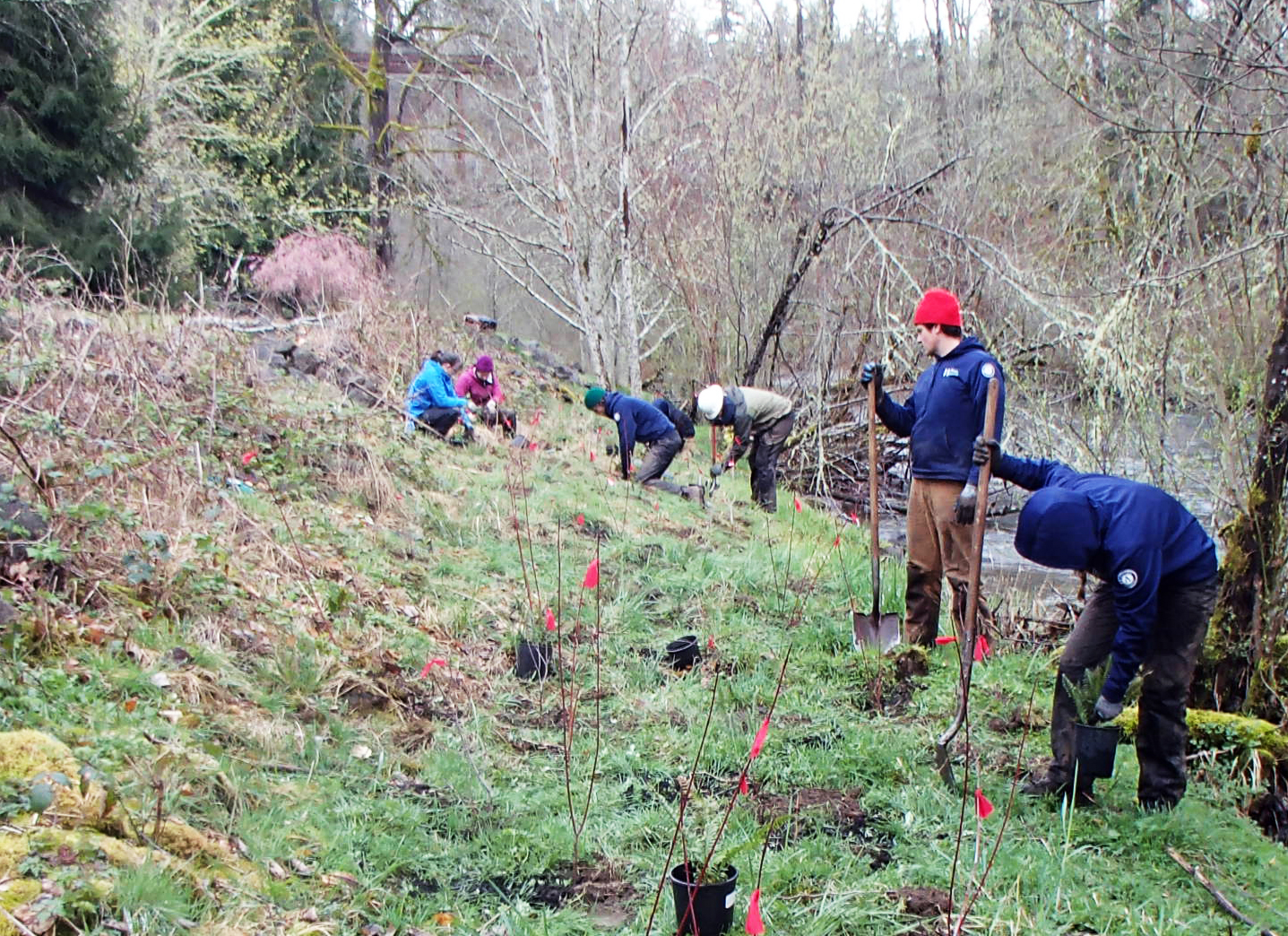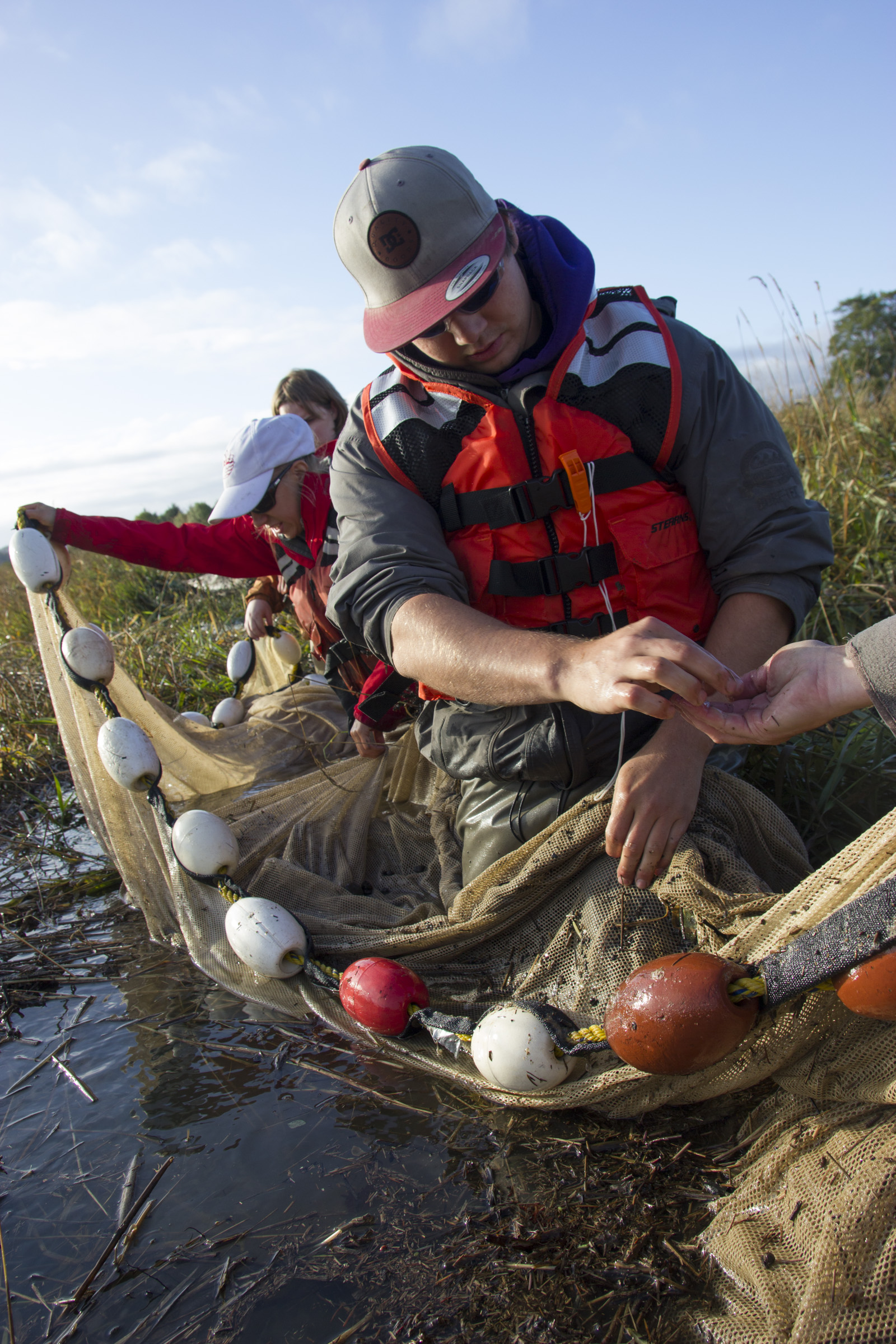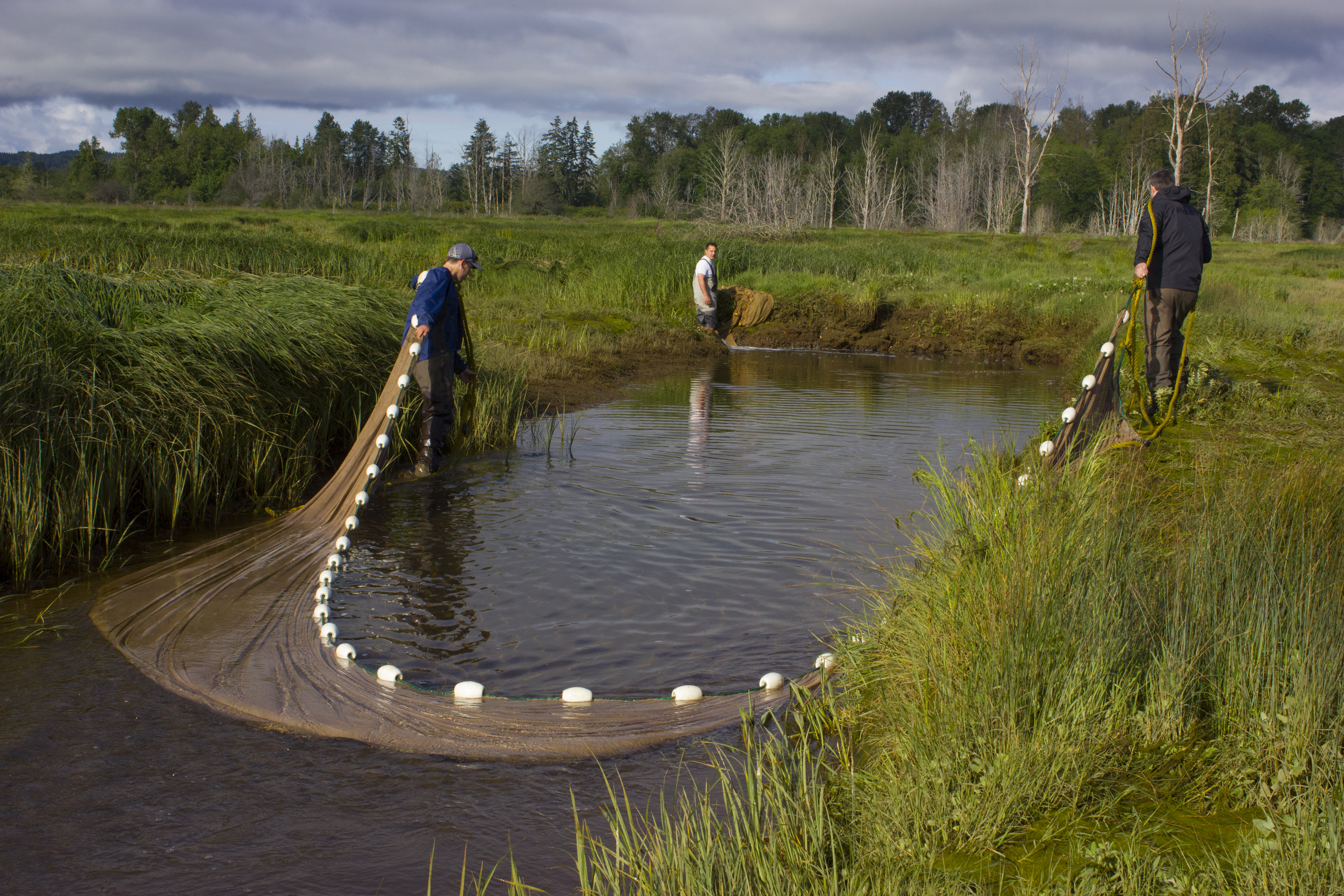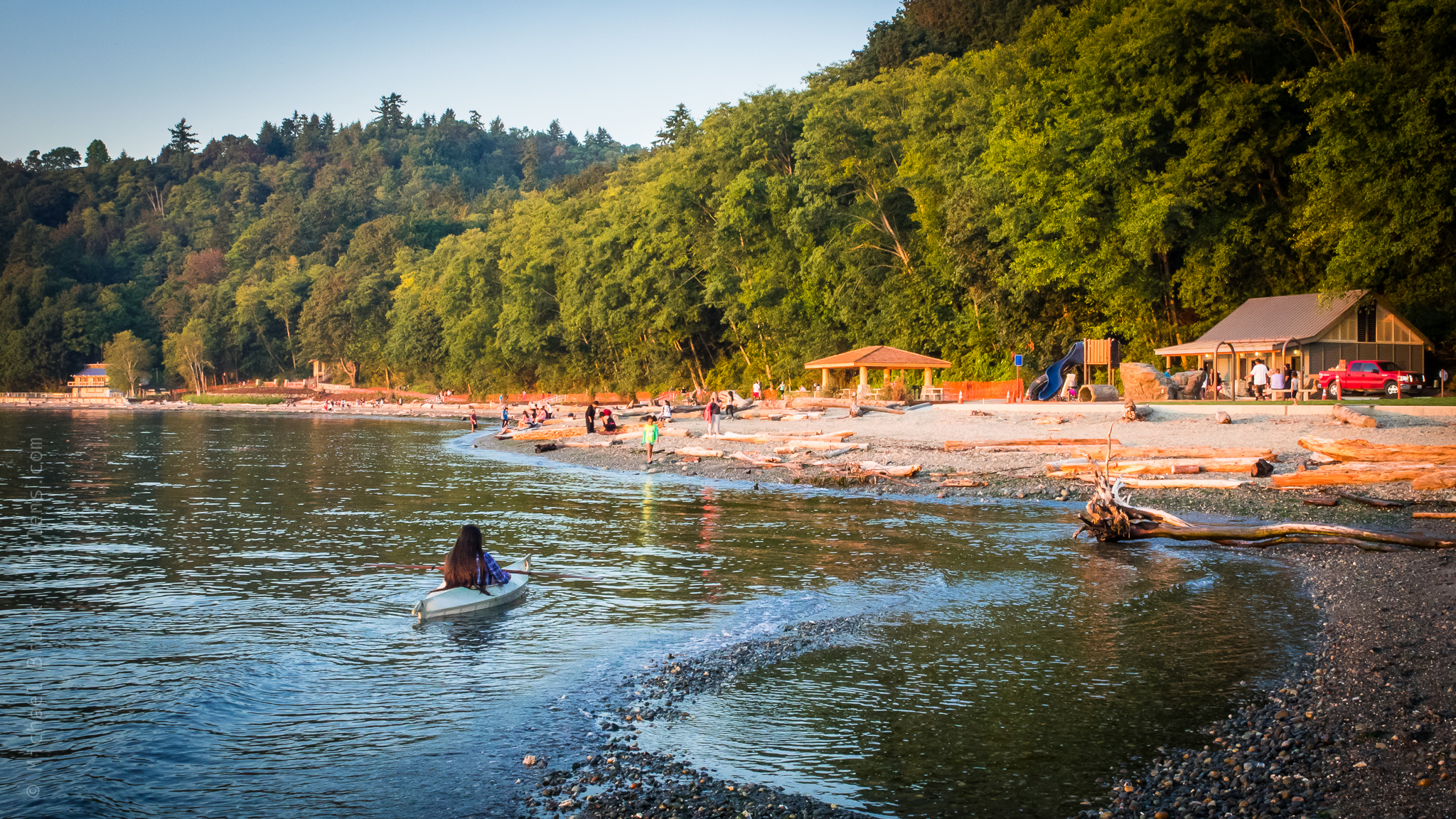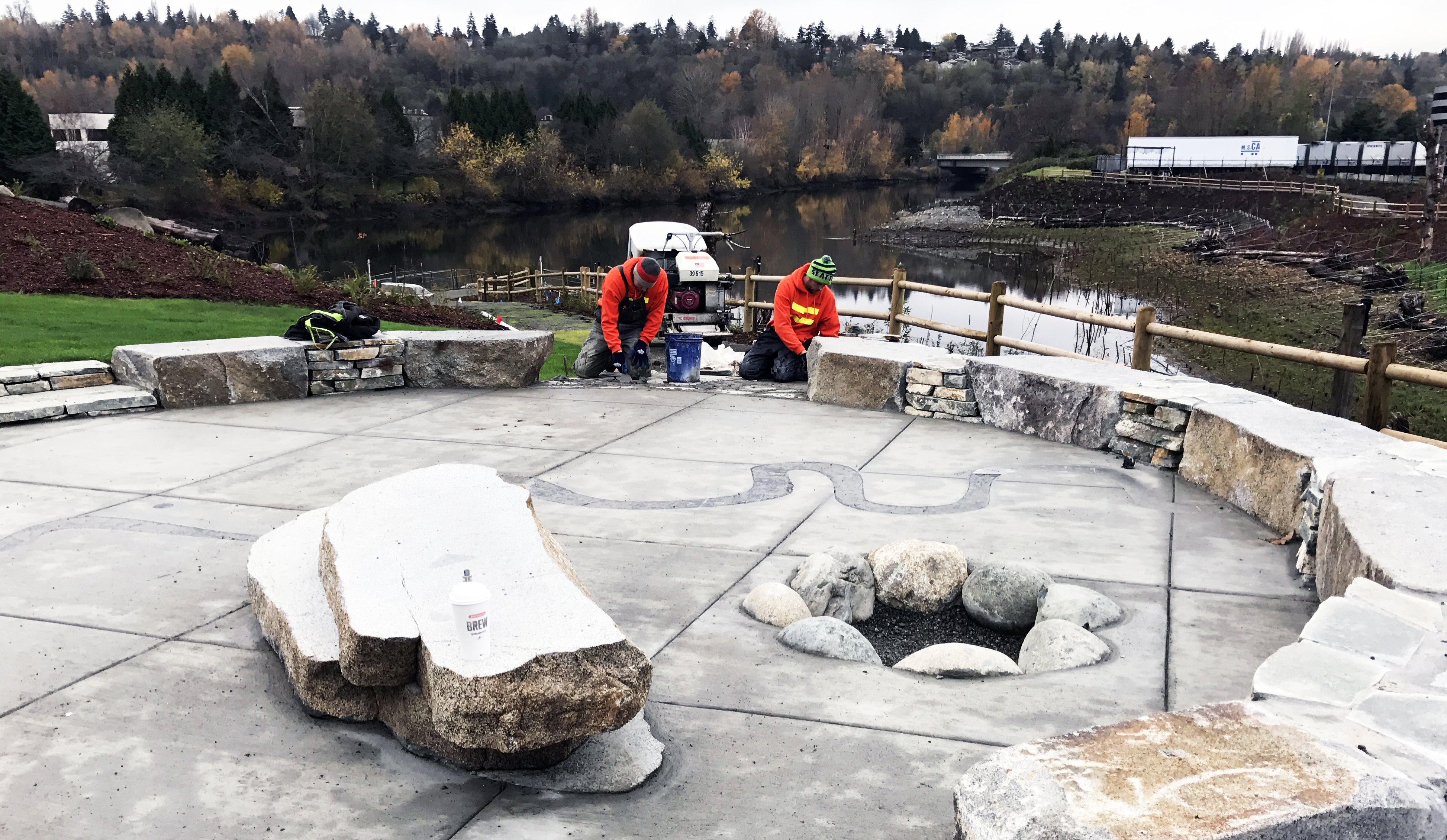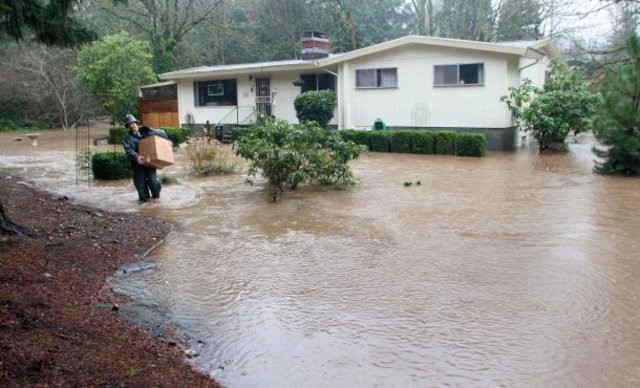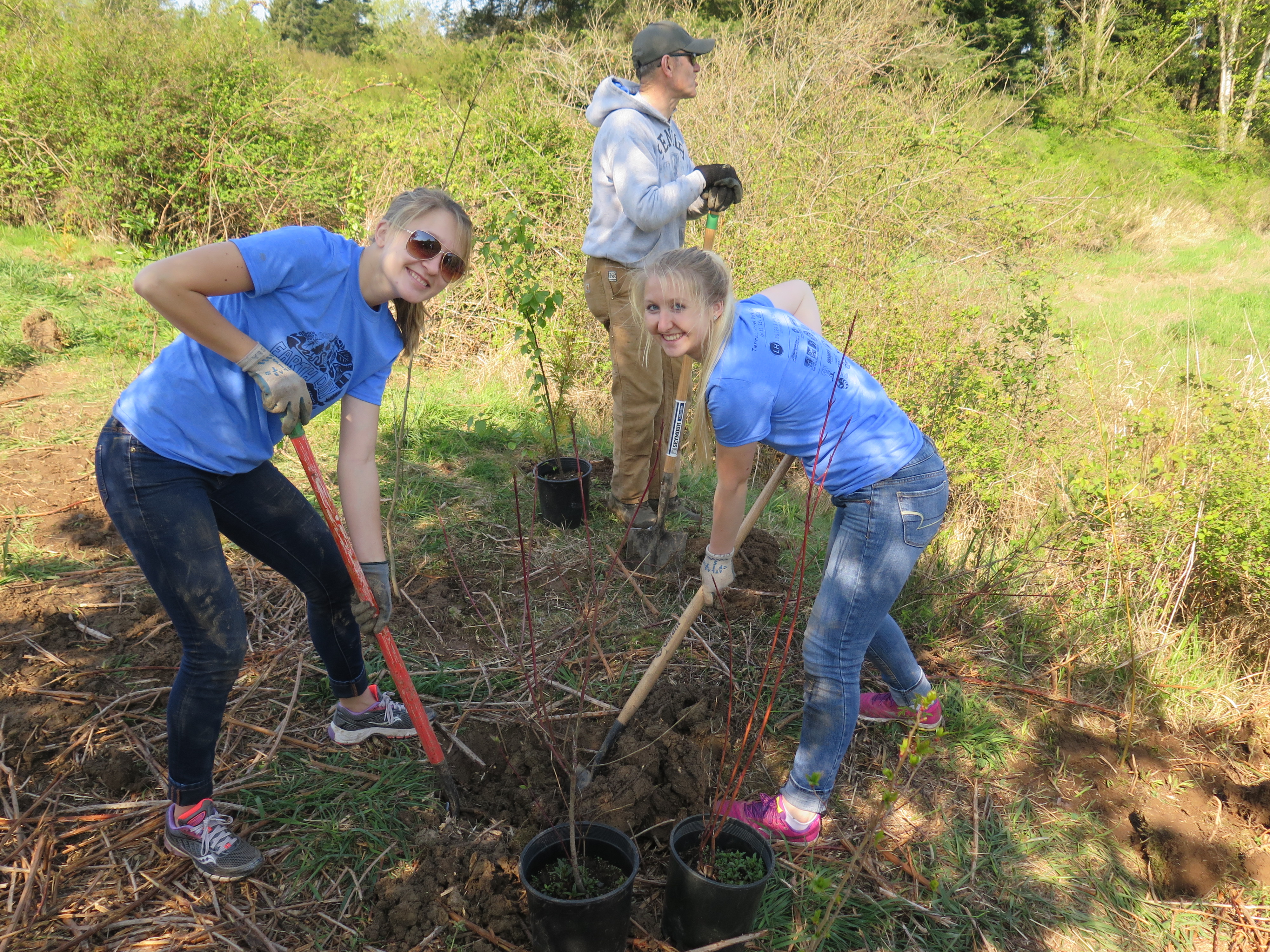Rebuilding native oyster beds and important habitat The Olympia oyster is Washington's original oyster. As our only native oyster species, they help keep our estuaries healthy by providing habitat for a diverse community of organisms. The oysters grow in aggregations,...
Restoration of the Pinto Abalone
Recovery of an iconic shellfish species to Puget Sound Abalone are large marine snails important to the food web. The pinto abalone is the only abalone species found in Washington waters. This native species has cultural and ecological significance, grazing rock...
Jimmycomelately Creek Restoration
Partners restore imperiled summer chum salmon and shellfish in Clallam County Jimmycomelately Creek and its estuary in Clallam County are now home to a robust population of ESA-listed summer chum salmon as well as a thriving commercial shellfish operation. This...
March’s Point Nearshore Restoration
Rebuilding beaches for forage fish March's Point is located on the northeast opening to Fidalgo Bay in Skagit County near two oil refineries. After an oil spill at the site in 1991, a large volume of beach sand was removed as part of the clean-up. The beach continued...
Cornet Bay Nearshore Habitat Restoration
Restoring Nearshore Habitat While Improving Public Access Thousands of visitors come to Cornet Bay every year to launch boats, picnic, fish and crab. Six lanes of boat launches provide the main saltwater access from Deception Pass State Park, with as many as 800 boats...
Thornton Creek Salmon Habitat Restoration
Salmon return to spawn after restoring an urban stream's natural habitat Chinook salmon returned to Thornton Creek in the Meadowdale neighborhood of Seattle in 2018 for the first time in twenty years. Chinook salmon were filmed laying their eggs in this urban stream,...
Weaverling Spit Nearshore Habitat Restoration
Removing bulkheads to create habitat for forage fish Weaverling Spit is located on Fidalgo Bay, and is traditional homeland of the Samish people. Bulkheads made of concrete, creosote-timber, or rock piles were originally built to protect property, but the bulkhead was...
Howarth Park Nearshore Habitat Restoration
Restoring habitat for Forage Fish while Improving a City Beach Park Howarth Park is a public beach used for recreation and was the site of a large-scale restoration and beach enhancement project in 2016. Along the Everett shoreline, rock bulkheads (seawalls) protect...
Bowman Beach Nearshore Restoration
Restoring an ecosystem and providing a beach to enjoy Bowman Bay is a pocket beach located in the Whidbey Basin at Deception Pass State Park. Prior to the 1970s, a seawall was built to protect a fish hatchery that was operated at the site. The hatchery was dismantled,...
Salmon Creek Estuary Restoration
Restoring an old mill site to benefit salmon, shellfish, and people The Salmon Creek and Snow Creek estuaries are located within a half-mile from each other in Discovery Bay, forming a complex system of salt and freshwater interchange where young salmon get used to...
Using Beavers for Salmon Habitat Restoration
Protecting wildlife and helping landowners builds salmon habitat naturally The Tulalip Tribes are collaborating with an unlikely partner to restore habitat for salmon: beavers. For four years, the Tribe has relocated about 100 beavers from private lands in the...
Union River Estuary Restoration
Restoring habitat and connecting people and salmon The Hood Canal Salmon Enhancement Group and the Washington Department of Fish and Wildlife collaborated to return ocean tides to restore salt marsh habitat in the lower Union River, which is part of the larger Lynch...
Maynard Nearshore Restoration
Removing defunct infrastructure to protect fish and shellfish The Maynard Nearshore Restoration Project is located at the head of Discovery Bay in Jefferson County. Salmon and Snow Creek enter the bay within a half-mile of one another forming an estuary that...
West Beach Creek Dam Removal
Restoring the connection between stream and sea West Beach Creek is one of the few streams in the San Juan Islands without a natural barrier, and so it was historically accessible to salmon. The Northwest Straits Foundation removed a small dam that had been built to...
Northwest Straits Marine Conservation Initiative
Local people. Local solutions. The Northwest Straits Marine Conservation Initiative catalyzes and empowers local communities to conserve and restore their marine resources. Established in 1998, the Northwest Straits Commission provides funding, training and support to...
Making connections for salmon in the Skagit
Photo credit: Eric Mickelson, Skagit River System Cooperative Project Summary Illabot Creek is a highly productive tributary of the upper Skagit River that supports relatively large populations of Chinook, chum, coho, and pink salmon, native char, and steelhead trout....
Moga Farm Restoration Project
CONGRESSIONAL DISTRICT: 01 LEGISLATIVE DISTRICT: 39 WRIA: 7 CITY, COUNTY: Snohomish, Snohomish County PROJECT SUMMARY The Snohomish River is the second largest producer of Endangered Species Act-listed Chinook salmon in the Puget Sound. The Moga Farm...
Cherry Creek Restoration Project
CONGRESSIONAL DISTRICT: 01 LEGISLATIVE DISTRICT: 45 WRIA: 7 CITY, COUNTY: Duvall, King County COST: $703,000 PROJECT SUMMARY Cherry Creek is the Snoqualmie River's lowest major tributary; its location provides high recovery-benefit potential for Chinook, Coho, and...
Lyre Conservation Area
CONGRESSIONAL DISTRICT: 6 LEGISLATIVE DISTRICT: 24 WRIA: 18 CITY, COUNTY: Dungeness, Clallam County Project Summary The Western Strait of Juan de Fuca, a migratory corridor for Puget Sound salmon, is characterized by small pocket estuaries and high-energy beaches. The...
Calistoga Levee Setback
CONGRESSIONAL DISTRICT: 8 LEGISLATIVE DISTRICT: 2 WRIA: 10 CITY, COUNTY: Orting, Pierce County Project Summary Man-made levee systems disconnect the river from its floodplain and prevented the large river systems from meandering. In Orting, the Puyallup River would...
Ala Spit Armor Removal
CONGRESSIONAL DISTRICT: 2 LEGISLATIVE DISTRICT: 10 WRIA: 6 CITY, COUNTY: Whidbey Island, Island County Project Summary Ala Spit, on the northeastern shore of Whidbey Island, is an important habitat for juvenile salmon and forage fish, but was damaged by...
Puget Sound National Coastal Wetlands Conservation
In early 2017, the U.S. Fish and Wildlife Service awarded the Washington State Department of Ecology with $4.7 million in National Coastal Wetlands Conservation grants to fund six projects to restore and protect wetlands in Puget Sound and the Grays Harbor area. The...
Smith Island
The Smith Island Estuary Restoration Project will benefit threatened salmon, restore ecological systems, and improve flood control and recreation across the region by: Removing a historic levee, excavating channel networks, and installing wood placements to improve...
Seattle Elliott Bay Seawall
The Elliott Bay Seawall Project involves replacing the old seawall on Seattle's waterfront to protect buildings, roads and utilities while providing shelter for marine life. The project will construct approximately 7,112 lineal feet of seawall along the Puget Sound...
Titlow Park Shoreline Restoration Project
The Titlow Park Shoreline Restoration Project is working closely with Tacoma Metro Parks to successfully remove a derelict bulkhead, seawall, and defunct home near an important bait fish beach in Puget Sound. The second phase of the project will undertake restoration...
Lower Big Quilcene
The Lower Big Quilcene restoration project is in the design phase of developing community-supported actions to improve flood protection for the town of Quilcene, over 30 homes, and road access to the largest employer in Jefferson County—Coast...
Nooksack River
A habitat restoration effort on the Nooksack River aims to help two important populations of Puget Sound Chinook salmon recover from dangerously low numbers. As with other salmon recovery actions undertaken by the Nooksack Indian Tribe, the goal of the...
Leque Island Estuary
In the Stillaguamish River watershed, 85 percent of historical tidal marsh habitat has been displaced by other uses. Leque Island's tidal marsh habitat is particularly valuable for young Chinook salmon as they transition from fresh water to saltwater but it is...
Lower Dungeness River
The Lower Dungeness River Floodplain Restoration project is a collaborative effort to restore floodplain habitats, keep people safe, support agriculture, improve water quality and quantity, and provide people with recreational access. State and federally funded...
Chambers Bay & San Juan Islands
Chambers Bay was the site of the 2015 United States Golf Association U.S. Open tournament. Hood Canal is home to the deepest part of Puget Sound. Both are beautiful places—but herring don't care about the scenery. They come to spawn. These sites, along with...
Cedar River Knotweed Removal
Stewardship in action: removing invasive knotweed one property at a time Invasive knotweed is an aggressive invader of riparian habitats throughout Western Washington. The plant displaces native vegetation and destabilizes riverbanks, disrupting natural habitat...
Qwuloolt Estuary Restoration
Led by the Tulalip Tribes, the Qwuloolt Estuary restoration is one of the largest restoration projects in Puget Sound. (Qwuloolt is the Lushootseed word for "marsh.") Located within the Snohomish River floodplain, the estuary historically encompassed tidal...
Skokomish Estuary Restoration
The Skokomish River floods more frequently than any river in Washington, and yet the river channel often goes dry during Chinook salmon migration. This is because nearly half of the Skokomish River estuary had been converted to diked farmland, which contributed to...
Seahurst Park
Seahurst Park is an oasis of 152 acres of forested ocean shoreline in a very urban corridor south of Seattle. The park boasts nearly a mile of natural beach and forested cliffs as tall as 400 feet. Seawalls were built in 1972, and as a result, sand from the cliffs...
Duwamish Gardens in Tukwila
Duwamish Gardens will provide nearly an acre of shallow-water habitat for salmon, as well as a pleasant park for urban residents to enjoy. Young salmon need off-channel, shallow-water habitat, where they can feed on insects and invertebrates that live among the...
Dickerson Creek
Dickerson Creek's upper reaches have some of the best salmon spawning and rearing habitat in Puget Sound. But Dickerson Creek and adjacent Chico Creek have been affected by streamside residential development and aging, undersized culverts. The culverts were identified...

